

How to Create a Business Plan for Sheep Farming
If you plan to raise sheep for profit or at least try to break even while raising sheep, one of the most important steps you can take to set yourself up for success is to develop a business plan for sheep farming. A well-considered business plan is an essential part of operating any business, and sheep production is no different.
Your sheep farm plan should include a clear set of goals, a firm grasp of flock management fundamentals, and the marketplace in which you plan to sell your breeding stock, meat, wool, and (if applicable) dairy products.
In this article we’ll cover the basics to help you develop a successful business plan for sheep farming.
Sheep Farm Business Plan Preparation
Putting together a business plan for your sheep farming operation isn’t so different from putting together a plan to launch any other business.
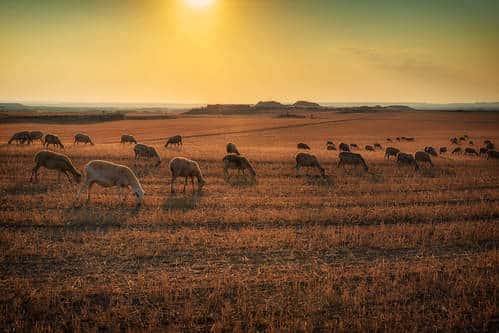
A business plan can help, even if you already have sheep on your property. Even if you have been raising stock for a few years. If you want to start running your farm like a business, creating an organized and informed plan can help. Not only can you get your farm out of the red, making a plan will also help you focus on your primary goals.
The basic components of a business plan for sheep farming may include the following 6 items:
Cover Sheet

Your cover sheet will include the name of your business, your farm’s contact information, and the date the plan was prepared. Even if you don’t plan to apply for a business loan, this is a good way to organize your sheep farm plan and help you take your efforts more seriously.
Executive Summary

This is a top-level summary of your sheep farm business plan, including a short description of your business, your mission statement and the goals you hope to achieve as you execute your business plan.
Business Description

Your business description should be a simple and accurate description of the main components of your business. This includes a short business overview, details about your business location and facilities, ownership of your business, and a short history of your farm.
Production Plan

Your sheep farm production plan will document the products that you will produce, how you will produce those products, and how much you expect to produce. This section should also detail any permits and regulations which may impact your production plan.
Marketing Plan

The marketing plan for your sheep farm should include a short summary of recent market trends, any marketing alliances you have or wish to build, an overview of your primary and secondary marketing strategies, and any competitive advantage your business has.
Financial Plan

Your sheep farm’s financial plan may be the most critical part of your overall business plan. Items you should plan to include in your financial plan are a balance sheet, an income statement, cash flow statement, and your overall farm enterprise budget.
Don’t be Overwhelmed, Find Support!
While it may seem overwhelming, most states and counties have a number of resources to assist you. Creating a well-executed sheep farm business plan doesn’t have to be a lonely endeavor.
Look for your local small business development center, farm service agency, or cooperative extension office for support.
Online Sheep Farming Business Plan Generators
We can also recommend the following online options if you need some assistance.

The University of Minnesota Center for Farm Financial Management has terrific online business planning software called AgPlan which is available for free!
Using this software allows you to not only view your business plan online, you can review examples of other people’s business plans created with AgPlan and also share your business plan with advisors to receive feedback and support.

Purdue University has an online business planner portal called INVenture , which uses a simple question and answer format to help you write a cohesive sheep farming business plan.
We feel that either the University of Minnesota platform, or Purdue’s platform can work if you’re having a hard time getting started on your own, or finding local support.
3 Things Which Can Make or Break Your Sheep Farm Plan
While there are many variables involved when planning and operating a business, some matter more than others. The 3 primary variables you should pay special attention to when creating and executing a sheep farming business plan are:
- feed costs ,
- market prices , and the
- percent lamb crop .
Cost of Feeding Your Flock
As you probably know if you’re considering raising sheep for profit, the cost of feeding your flock will be your primary expense. This is particularly true for the cost of feeding your ewes.
While there are many strategies for determining your annual feed cost, including determining in advance how many sheep per acre your farmland can support , there is no one-size-fits-all solution when it comes to feeding a flock of sheep.
Early on you may have to estimate your annual feed costs. After a few years you will be able to average your historical spending to obtain an accurate cost projection.
Prevailing Market Prices
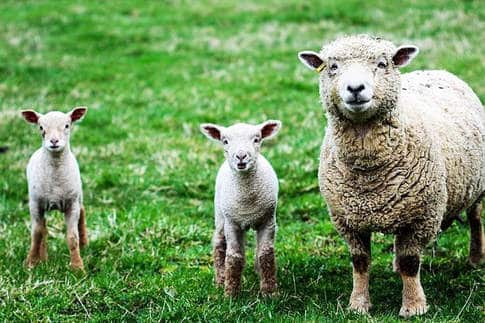
Market prices for your meat, wool, and dairy products can change annually, seasonally, and even week to week.
Higher market prices will increase your profitability, but it’s important to compare “net” market prices.
If you have to sell through a livestock auction there will be extra cost. These businesses often charge a flat fee or a percentage of the sale. So a higher price may not net you as much as if you sold direct to a consumer at a lower price.
In general, if you can sell direct from your farm to commercial buyers or consumers, you can net more per sale. Cutting out the middle man is usually good business.
It’s important to be aware of this when you develop the marketing plan for your sheep farm.
Percent Lamb Crop
Finally, the Percent Lamb Crop in any given year will have a major impact on your profitability. We define this data point as the number of lambs marketed (or retained for breeding) produced by each ewe exposed for breeding.
In general, producing more lambs will net you more profit, as it will typically cost the same amount of money (or close to it) to maintain a ewe, regardless of how many lambs she produces in a year.
A flock of prolific ewes that raise numerous healthy lambs will improve your percent lamb crop and can help make your sheep business more profitable.
For most shepherds, 200% is a realistic goal to set, and most sheep breeds can produce a 200% lamb crop each year if fed and managed properly.
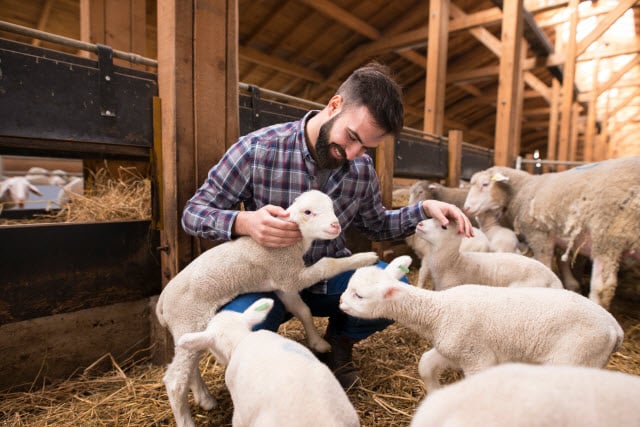
A ewe’s age, weight, nutrition, and genetics can all impact her ability to deliver multiple lambs per year. Most ewes reach their peak productivity between 3 and 6 years of age; something to be aware of as you monitor the age of your flock.
Preparing a Business Plan for Sheep Farming (takeaways)
While raising sheep may not be the most glamorous or lucrative business opportunity, it can be one of the most rewarding, and if you can approach the endeavor from a practical business standpoint, with a thoughtful sheep farm plan, then you’ll have a better chance to succeed.
Raising sheep for profit can be realistic if you pay close attention to your production, financial, and marketing plans, and set a realistic budget. Most importantly – stick to the plan!
You May Also Enjoy:

The Rise of Sheep Farming: Capitalize on the $20B Industry
Related blogs.
- Get your Sheep on the Road to Wealth: The Ins and Outs of Profitable Sheep Farming
- Sheep Farming: Is it Worth the Investment? Analyzing the Startup Costs and Profit Potential
- 7 Essential Sheep Farming Metrics for Profitability and Sustainability
Are you considering opening a sheep farming business, but not sure where to start? You've come to the right place. The sheep farming industry is a relatively untapped market with a lot of potential for growth. Global demand for lamb meat and wool is on the rise, making sheep farming an attractive and profitable venture.
According to the latest statistics, the global sheep population is approximately 1 billion, and the industry is valued at over $20 billion. Europe and Asia are the leading regions for sheep farming, with the United States and Australia following closely behind. In 2019, the global market for lamb meat was valued at $8.27 billion and is projected to grow at a compound annual growth rate of 4.2% from 2020 to 2027.
Starting a sheep farming business can be both challenging and rewarding. In this article, we'll outline 10 practical steps to help you start your sheep farming business successfully. Whether you're looking to start a small-scale operation or a large commercial farm, this checklist will ensure that you have a solid foundation for success.
Step 1: Write a Business Plan
- Creating a solid business plan is a critical step in starting your sheep farming business. Your business plan should outline your goals, strategies, and financial projections. This plan will serve as a roadmap for your business, helping you stay focused and on track.
Step 2: Design a Financial Model
- A well-designed financial model will help you understand your cash flow and profitability. You'll need to consider factors such as the cost of land, sheep, feed, equipment, and labor. Your financial model should include revenue projections, expenses, and profit margins.
Step 3: Explore Funding Opportunities
- Starting a sheep farming business can be expensive. You'll need to explore different funding options such as loans, grants, or partnerships. Consider reaching out to local banks, credit unions, or government agencies that offer financial assistance for agricultural businesses.
Step 4: Research Sheep Farming Industry Regulations & Laws
- It's essential to understand the regulations and laws specific to the sheep farming industry. You'll need to comply with federal and state guidelines regarding animal welfare, food safety, and environmental protection. Research the laws in your area and consult with an attorney or agricultural specialist to ensure compliance.
Step 5: Obtain Necessary Permits & Licenses
- Before you start your sheep farming business, you'll need to obtain the necessary permits and licenses. You'll need to register your business and obtain a tax ID number. You may also require permits for land use, animal husbandry, or food production.
Step 6: Analyze the Market & Competitors
- Understanding your market and competitors is crucial to the success of your sheep farming business. Analyze market trends, pricing, and customer preferences. Research your competitors and identify their strengths and weaknesses.
Step 7: Identify Target Customer Demographic
- Identifying your target customer demographic will help you tailor your products and marketing strategies. Consider factors such as age, geographic location, and income level. Develop a marketing plan that addresses the needs and preferences of your target market.
Step 8: Gather and Source Sheeps
- As a sheep farmer, your most important asset is your flock. You'll need to decide which breeds are best suited for your farm and locate reputable breeders. Consider factors such as breed characteristics, disease resistance, and temperament. Purchase or lease your sheep from a certified supplier to ensure that your flock is healthy and disease-free.
Step 9: Develop Marketing and Branding Strategies
- Developing effective branding and marketing strategies will help you attract customers and grow your business. Consider elements such as logos, packaging, and advertising. Develop an online presence through social media and an e-commerce website.
Step 10: Hire Qualified Staff
- If you're running a large-scale operation, you'll need to hire qualified staff to help manage your farm. Consider hiring skilled workers such as shepherds, veterinarians, and animal handlers. Ensure that your employees have the necessary training and experience to ensure the health and safety of your flock.
Starting a sheep farming business requires hard work, dedication, and careful planning. By following these 10 steps, you'll be on your way to a successful and profitable venture. Remember to keep your business plan and financial model up-to-date, stay informed about industry regulations and laws, and always strive to provide quality products and services to your customers.
1. Write A Business Plan
Before starting any business, it is crucial to have a well-thought-out plan in place. This serves as a roadmap and helps you stay focused and on track as you work towards your goals. When writing a business plan for your sheep farming business, consider the following chapters:
- Executive Summary: A brief overview of your business, including your mission, vision and goals.
- Market Analysis: Research the market, including your target customer, competition, and industry trends.
- Products & Services: Describe what lamb products you will be offering, and how they will meet the needs of your market.
- Marketing & Sales: Detail your marketing plan and strategy for attracting and retaining customers.
- Operations: Outline how your sheep farming business will operate on a daily basis, including staffing, equipment, and facilities.
- Financials: Provide financial projections, including startup costs, revenue and expenses, and profit margins.
Tips & Tricks:
- Research: Take the time to do thorough market research and analyze your competition. This helps you identify gaps in the market and sets your business apart from the rest.
- Stay Focused: Be sure to stay focused on your goals and objectives. Don't get distracted by the latest trends or shiny objects; instead, focus on what will drive your business forward.
- Get Professional Help: If you have never written a business plan before, consider hiring a professional consultant or mentor to guide you through the process.
Creating a business plan is essential for success in any business venture, especially in sheep farming. Take the time to create a plan that is detailed, well-researched, and focused, and you'll be well on your way to launching a successful sheep farming business.
2. Design A Financial Model
Once you have determined the breed of sheep you want to farm and where you will be located, it’s time to start designing a financial model. The financial model will help you to determine the costs and profitability of your business. Without a good financial model, you could be setting yourself up for failure. If you don't know how to design a financial model, hire a financial consultant to help you.
- Step 1: Revenue Projections: The first step in designing a financial model is to create revenue projections. Estimate the amount of wool you expect to produce, the number of lambs you will sell and the price per pound for each. Based on this, forecast your annual revenue.
- Step 2: Cost Projections: You need to estimate your costs, including feed, labor, veterinary care, shearing, and transportation. Make sure you include all expenses, no matter how small. This will help you determine your profitability.
- Step 3: Profitability Analysis: Based on your revenue and cost projections, create a profitability analysis. This will help you to identify areas where expenses may need to be cut and where you can increase revenue. Make sure you look at the data from different angles, such as monthly and quarterly, to get a more complete picture.
- Step 4: Cash Flow Projections: Finally, create your cash flow projections. This will help you to identify when you may run into cash flow issues and help you to plan for them. Based on this data, you can create a budget and make adjustments as needed to ensure you have enough cash to cover your expenses.
- When designing your financial model, always be conservative with your estimates. It’s better to underestimate your revenue and overestimate your costs to avoid any surprises down the road.
- Make sure to account for any unforeseen expenses that may arise, such as a drought or disease outbreak. This will help you to be prepared for any scenario.
- Consider creating a sensitivity analysis in your financial model to see how changes in pricing, production, and expenses could impact your cash flow and profitability.
Designing a financial model is not just a one-time activity. You need to continuously update your model and adjust for changes in the market, production, and expenses. By having a good financial model in place, you will be better equipped to make informed decisions and ensure the success of your sheep farming business.
3. Explore The Funding Opportunities
Starting a sheep farming business is a significant investment that requires a considerate amount of capital. The primary expenses that are associated with this venture include land acquisition, sheep purchase, livestock management, equipment procurement, and healthcare expenses. Besides personal investment, you can explore several funding opportunities to help you actualize your sheep farming enterprise. Here are some options you can consider:
- Bank Loans: This option is suitable for entrepreneurs who have started their own sheep farming business and need additional financial support to grow their business. Most financial institutions offer loans with moderate interest rates and flexible payment options to their clients.
- Government Grants: Several state and local government body offers grants to start-up businesses in a bid to foster economic growth within their jurisdiction. Research on the eligibility criteria, and apply for the grants that best suit your business needs.
- Crowdfunding: This option involves raising funds from a group of individuals interested in supporting your sheep farming enterprise either through donations or equity investments. You can advertise your business/project on social media platforms and crowdfunding websites to attract potential investors.
- Angel Investors: These investors are high net worth individuals who offer financial support and mentorship to start-up businesses in exchange for equity in the enterprise. Reach out to potential angel investors, provide them with a compelling business plan, and demonstrate how your sheep farming business will create value for investors.
Here are three tips to increase your chances of securing funding:
- Conduct thorough research and seek professional guidance before applying for funding opportunities to avoid fraudulent activities and increase your chances of being accepted.
- Develop a compelling and comprehensive business plan that outlines your budget, business model, target market, revenue streams, and growth strategy. This plan should be accompanied by financial projections that demonstrate profitability over time.
- Prepare a convincing pitch that outlines the unique value proposition of your sheep farming business and the benefits you offer to potential investors. A strong pitch will increase the chances of attracting funding.
In conclusion, exploring funding opportunities is a crucial step when starting a sheep farming business. Banks loans, government grants, crowdfunding, and angel investors are some of the funding options you can explore. To increase your chances of securing financial support, conduct research, develop a comprehensive business plan with financial projections, and prepare a convincing pitch that outlines your unique value proposition and benefits to investors.
4. Research Sheep Farming Industry Regulations & Laws
As a new sheep farmer, it's essential to research various regulations and laws that govern the industry. Understanding these laws will help you run your business smoothly without running afoul of the authorities.
Chapter 1: Understanding Sheep Farming Laws
Sheep farming is highly regulated to ensure animal welfare, food safety and biosecurity. You will need to comply with various laws and regulations, such as:
- The Animal Welfare Act
- The National Wool Act
- The Meat Inspection Act
- The Clean Water Act
- The Endangered Species Act
You will need to get acquainted with these laws, their requirements on record-keeping, licensing and permits.
Chapter 2: State and Local Regulations
Your state and local authorities may have specific rules for sheep farming. You might need to comply with zoning laws, get permits, obtain health certificates or approval from local authorities before establishing your sheep farm. Check with your state's agriculture department for regulations and resources.
Chapter 3: Environmental Regulations
Sheep farming can have significant impacts on the environment, especially water quality. You may need to implement erosion and sediment control measures, adhere to fencing and grazing plans to minimize soil and water contamination. The U.S. Environmental Protection Agency regulates potential environmental issues concerning the impact of farm operations on nearby watersheds and drinking water.
Chapter 4: Understanding Livestock Production and Marketing Regulations
Livestock production and marketing regulations do not only regulate the sale of animals and animal products like milk and wool, but also farm operations. Your state's Department of Agriculture is a good place to start, as they usually have resources on livestock marketing regulations, changes in market prices and producer prices.
Chapter 5: Insurance and Liability
Insurance is essential in protecting your farm against risks. Sheep farms can encounter various risks like disease outbreak, fire, theft, and natural disasters. You will also need liability insurance in case someone gets injured on your property. Contact an insurance agent who specializes in agriculture to find coverage that will work for you.
Tips & Tricks
- Make sure you have the appropriate permits and licenses as required by your state and local regulations
- Adhere to animal welfare, food safety, and biosecurity regulations to avoid penalties or getting your farm closed down
- Get insured to protect yourself against unforeseen risks and lawsuits
Overall, understanding regulations and laws that govern sheep farming is crucial in starting and running a successful business. Take the time to research and get acquainted with the requirements to avoid any potential setbacks.
5. Obtain Necessary Permits & Licenses
Before starting any business, it's important to ensure that you have all the necessary permits and licenses. In the case of a sheep farming business, you need to find out what permits and licenses are required in your area.
One important permit is a zoning permit. Zoning laws vary from county to county and state to state, so you need to check with your local zoning board to see if you are allowed to have a sheep farming business on your chosen land. You may also need a building permit if you are building any structures on the land.
You will also need to obtain a business license from your local government to operate a sheep farming business. This will allow you to conduct business legally and gives you the ability to file taxes in your area.
In addition to these permits and licenses, you may need to obtain other certifications and permits as well, such as a food handling permit if you plan to sell products from your farm.
It's important to do your research and find out exactly what permits and licenses are required in your area. Failure to obtain the necessary permits and licenses can result in fines and legal issues down the road.
- Make sure to check with your local government for rules and regulations regarding animal husbandry, feed, and healthcare requirements.
- Consult with an experienced business lawyer to help you navigate the legal aspects of starting a sheep farming business.
- Consider joining a local farming association or organization to gain insights and support from other sheep farmers in your area.
6. Analyze The Market & Competitors
In order to successfully start a sheep farming business, it is crucial to understand the market and your competitors. Without analyzing the market and competitors, you may invest in a business that isn't profitable or sustainable.
Begin by researching the demand for sheep products in your area or potential market. What is the current trend? Are customers interested in locally-sourced and sustainable products? What do they value when purchasing sheep products?
You should also look into competitors in your area or market. Who are they? What products and services do they offer? How do their prices compare to yours? This information will help you identify potential gaps in the market that you can fill, or help you differentiate your business from competitors.
- Research demand for sheep products in your area or market
- Identify trends and customer preferences
- Research competitors and their products/services
- Network with local farmers and businesses to gather information
- Use online resources such as census data and industry reports to gather market data
- Visit farmers markets and other local events to gauge customer interest and preferences
In addition to researching the market, you should also familiarize yourself with the regulations and laws surrounding sheep farming in your area. These regulations may vary depending on your location and the size of your operation, so be sure to do thorough research.
Some common regulations may include livestock health and safety requirements, environmental regulations, and zoning laws. Make sure you have all necessary permits and licenses before launching your business.
- Research regulations and laws surrounding sheep farming in your area
- Ensure you have all necessary permits and licenses
By understanding the market and your competitors, you can make informed decisions about your sheep farming business and increase your chances of success.
7. Identify Target Customer Demographic
One of the most important steps when starting a sheep farming business is identifying your target customer demographic. This will determine the type of sheep you will raise and the products you will sell. Here are some key factors to consider when identifying your target customer:
- Location: Consider the location of your farm and the surrounding area. Is there a demand for sheep products, such as wool or meat, in the local community? Are there any nearby markets or restaurants that would be interested in purchasing your products?
- Demographics: Think about the age range, income level, and lifestyle of your potential customers. For example, if you are targeting young, health-conscious consumers, you may want to consider raising grass-fed lambs without antibiotics. On the other hand, if you are targeting an older demographic, you may want to focus on breeding sheep for their wool.
- Cultural Considerations: In some cultures, sheep meat is a staple in their diets. If you are located in an area with a large population of people from a certain culture, it may be worthwhile to cater to their needs and preferences.
- Market Research: Conduct thorough market research to understand current demand for sheep products in your target area. This may involve analyzing competitor prices and products, as well as gathering feedback from potential customers.
Once you have identified your target customer demographic, you can begin to develop a business plan and marketing strategy tailored to their needs and preferences. Remember, understanding your customers is essential to the success of your sheep farming business.
- Consider offering a variety of sheep products, such as wool, meat, and milk, to appeal to a wider range of customers.
- Attend local farmers markets and events to get feedback from potential customers and increase brand awareness.
- Keep up with current industry standards and trends to ensure you are providing high-quality products that meet the demands of your target customers.
Gather And Source Sheeps'
Once you have set up your sheep farming business, the next step is to gather and source sheeps. You need to consider the breed, age, quality, and quantity of sheeps you require to start your venture.
You can start by sourcing sheeps from fellow farmers or livestock auctions. It is advisable to source sheeps from reputable vendors who can provide details on the animal's medical history and other relevant information. Ensure that the sheeps you purchase are healthy and free from diseases. It is also important to quarantine new animals for at least three weeks before introducing them to your existing herd.
- Contact other farmers:
- Ask for referrals from other farmers in your area who have healthy livestock
- Visit them and examine their shepherd's breeding and farming practices
- Analyze the environment of the livestock that you intend to purchase
- Livestock auctions:
- Attend livestock auctions
- Examine the animals before making a purchase
- Ask for all relevant documents, including medical records and bills of sale
- Do not purchase animals in the breeding season as it may affect the quality of milk or wool that you expect to receive from your animals.
- If buying from an auction, make sure to attend early in the day to get first pick of the animals available
- Never hurry to buy sheeps. Carefully analyze the animal and its history before making a purchase.
You must remember that the health and quality of your livestock are critical factors that determine your business's success. Investing in the right animals leads to a higher return on investment in the long run.
9. Develop Marketing And Branding Strategies
One of the most important aspects of launching a sheep farming business is creating effective marketing and branding strategies. These strategies will help you promote your business, attract customers, and build a strong brand identity. Here are some key steps to consider when developing your marketing and branding strategies:
- Identify your target audience: Before you can create effective marketing and branding strategies, you need to know who your target audience is. Are you targeting other farmers, restaurants, or individual consumers? What are their needs and preferences?
- Develop a unique brand identity: Your brand identity is what sets you apart from your competitors. Develop a strong brand message around your unique selling points and integrate it into your logos, packaging, and marketing materials.
- Utilize social media: Social media is a powerful tool for reaching potential customers and building brand awareness. Consider creating a social media marketing plan that includes regular posting and engagement with your followers.
- Attend relevant events: Attending agricultural fairs, farmer's markets, and other relevant events can help you get your product in front of your target audience. Consider setting up a booth to showcase your products and services.
- Get creative with promotions: To get consumers excited about your products, consider offering promotions such as discounts, free samples, or contests. This can help you attract new customers and build brand loyalty.
- Use storytelling to connect with customers and build emotional connections around your brand.
- Partner with other businesses or influencers in your industry to expand your reach.
- Leverage the power of customer reviews and testimonials to build credibility and trust with potential customers.
By taking these steps to develop effective marketing and branding strategies, you can increase your chances of success in the sheep farming industry. Remember to monitor your progress and adjust your strategies as needed based on feedback from your target audience.
10. Hire Qualified Staff
One of the most important aspects of running a successful sheep farming business is hiring the right staff. A qualified team can help ensure the smooth operation of your farm, as well as help you achieve your business goals. Here are some tips for hiring qualified staff for your sheep farming business:
- Define your needs: Before you start recruiting, make sure you have defined the roles and responsibilities of each position. This will help you identify the qualifications and experience you are looking for in potential candidates.
- Write a job description: A clear job description is essential to attract the right candidates. The description should include duties, qualifications, required skills, and expected outcomes. Use industry-specific language to help you communicate the requirements of the position effectively.
- Screen resumes: Use a systematic approach to screen through resumes and cover letters. Look for relevant experience, education, and skills. Filter candidates who do not meet the minimum qualifications and invite the most promising ones for an interview.
- Conduct interviews: Prepare a list of interview questions that will help you evaluate the candidates' qualifications, experience, and fit for your organization. Use a structured interview format and evaluate each candidate on a standardized scale to ensure consistency and fairness.
- Check references: Before making an offer, check at least two references for each candidate. These references should be professional contacts who can attest to the candidate's work experience, skills, and work style.
- Train and onboard: Once you've found the right candidates, give them the tools they need to succeed. Provide them with adequate training, including safety training, job-specific knowledge, and goals and expectations. Use a checklist to onboard new employees systematically and ensure they have everything they need to get started.
Tips and Tricks
- Include 'soft skills' in your job description, such as the ability to work in a team, communication skills, and problem-solving skills.
- Consider offering an incentive program to motivate your staff to meet or exceed your business goals.
- Provide regular feedback and check-ins with your employees to ensure they are meeting expectations and address any concerns or issues early.
Remember, your staff is a crucial part of your sheep farming business, and hiring qualified individuals will pay off in the long run. Use the steps outlined above to build a strong team that will help you achieve success and reach your business goals.
Starting a sheep farming business can be a challenging yet rewarding venture. With the global demand for lamb meat and wool on the rise, the industry has a lot of potential for growth. By following the 10 practical steps outlined in this checklist, you can be on your way to creating a successful and profitable sheep farming business.
Remember to create a solid business plan, design a well-thought-out financial model, explore funding opportunities, and understand the regulations and laws specific to the sheep farming industry. Identifying your target customer demographic, gathering and sourcing healthy sheep, developing effective marketing and branding strategies, and hiring qualified staff are also crucial steps to the success of your business.
Keep in mind that the global sheep population is about 1 billion , and the industry is currently valued at over $20 billion . The global market for lamb meat was valued at $8.27 billion in 2019 and is projected to grow at a compound annual growth rate of 4.2% from 2020 to 2027. With these numbers in mind, there's no better time to start your sheep farming business.
By staying up-to-date with industry trends and constantly striving to provide quality products and services to your customers, your sheep farming business can thrive in this growing industry.

5-Year Excel
MAC & PC Compatible
Immediate Download
Related Articles
The surprising truth about profitability in the appliance store industry: a deep dive into the numbers, why investing in an alcohol treatment center is more profitable than you think, counting the profits: a closer look at the profitability of accounting agencies, the art of boosting profits in your a la carte restaurant: a comprehensive guide, airbnb: unpacking the profitability of one of the world's most successful companies., the untold story of how car washes are making a fortune: discover the profit potential today, pedaling to profit: unveiling the lucrative world of bicycle couriers, thirsty for success discover the untapped profit potential of running a beer bar, the beauty within profits: discovering the lucrative world of beauty salons, unlocking the profit potential: how to make your beach hotel more profitable, leave a comment.
Your email address will not be published. Required fields are marked *
Please note, comments must be approved before they are published
- Skip to content
- Skip to footer
The Shepherdess
Resources for Beginner Sheep Farmers, Dorper Sheep for Sale in Texas!
HOW I BUILT A $100K SHEEP FARM BUSINESS IN 3 YEARS (Sheep farming for profit)
“11 QUESTIONS” Business PLANNING WORKSHEETS
In 2020 I decided I wanted to become a farmer for profit. I had no idea what I was up against, I just knew I wanted to generate $100K per year off of my 23 acre sheep farm with a net profit minimum of 30%.
- no farming background.
- no industry connections.
But what I did have was knowledge.
- Our food system is broken.
- Our farmers are dying.
- We need more people growing groceries.
And I knew how to market… While I had never built a farm business, I had built and marketed several other business… mostly in the retail apparel industry. So I shoved everything I knew from marketing shoes and clothes in the direction of marketing sheep: Branding, content creation, email marketing, live launching, product stacking, and diversification. It’s all I had, and gave it all I had. 1000 days after launching my farm business, it earned just shy of $100K within one calendar year.
- Youtube Ad Revenue
- Sponsorship deals
- Course sales
- Speaking fees
In a year by year format I am going to show you exactly how I built my farm brand and a concept that rapidly increased gross revenue. We are talking going from $10k to $100k within just a year. That $100k gross is split between three distinct products that fit within a similar category and all appeal to the same person. What I am getting ready to outline transcends industries, so no matter what business you decide to build you will more than likely pull something out of this video. I know this because the same methods I used to sell sheep were the same methods I used to sell shoes.
HOWEVER, while this pattern is simple (if you are like me)… the hard part of the whole process will be sticking with it and not quitting. Here’s why:
Year 1 , I worked about 1000 hours to build my farm business and grossed about $0.
Year 2 , I worked another 1000 hours to build my farm business and grossed about $10,000. That’s like a dollar an hour.
Year 3 , I worked about 1000 hours on my farm business and grossed about $100K.
There were a lot of times I wanted to QUIT. It was very discouraging to work so hard without any immediate return.
If you are in it for money you will quit, because there are thousands of easier ways to make this kind of money. You have to farm for deeper reasons.
Here is a year by year look at the marketing that went into building the Shepherdess Brand:
Year 1: I set a solid foundation. Mindset and otherwise.
- I decided I wanted to make $100k per year farming 23 acres, with a minimum net profit of $30k.
- Decided I was going direct to consumer. No sale barns, no middle man, whatever farm goods I sold would be sold through my own website or straight from my farm to you.
- I penciled out a business plan with beef. I couldn’t achieve a net profit of $30k with beef on 23 acres. Even with the fanciest beef I could only pencil out about $8,900 on 23 acres.
- I pivoted from beef to sheep as my primary enterprise. I still run beef, I still sell sides of grass fed and finished beef, but just in a much smaller ratio to sheep.
- I built my website (Shepherdess.com). I published 3 long-form, SEO optimized articles to the website that would rank in Google search.
- I setup a newsletter.
- Created a solid brand name, logo, and slogan.
Year 2: I worked ahead of time to build my newsletter list with people who might be interested in buying my sheep.
By the beginning of year two my flock was lambing and I was almost ready to sell my first lambs. 6 months before launching my first sheep sale, I doubled down on building my newsletter list.
I used social media to find people for my newsletter. I chose Instagram and Youtube to find people for my newsletter. I chose Youtube because Youtube and Google are both search engines. I created videos with the goal of ranking in Youtube search engine in the same way that I wrote the blog posts. With my videos I answered specific questions about sheep farming.

In prep for my first livestock sale, I listed some small merch at shepherdess.com. My sheep weren’t ready yet, but I offered Gateway products: Stickers and shirts. I didn’t make a lot of money off these products, but it was a way that people could connect and purchase something small to support my work.
I held my first livestock sale at Shepherdess.com on August 11, 2021. I advertised my sheep through my newsletter and sold all of them through either Shepherdess.com or through Craigslist.
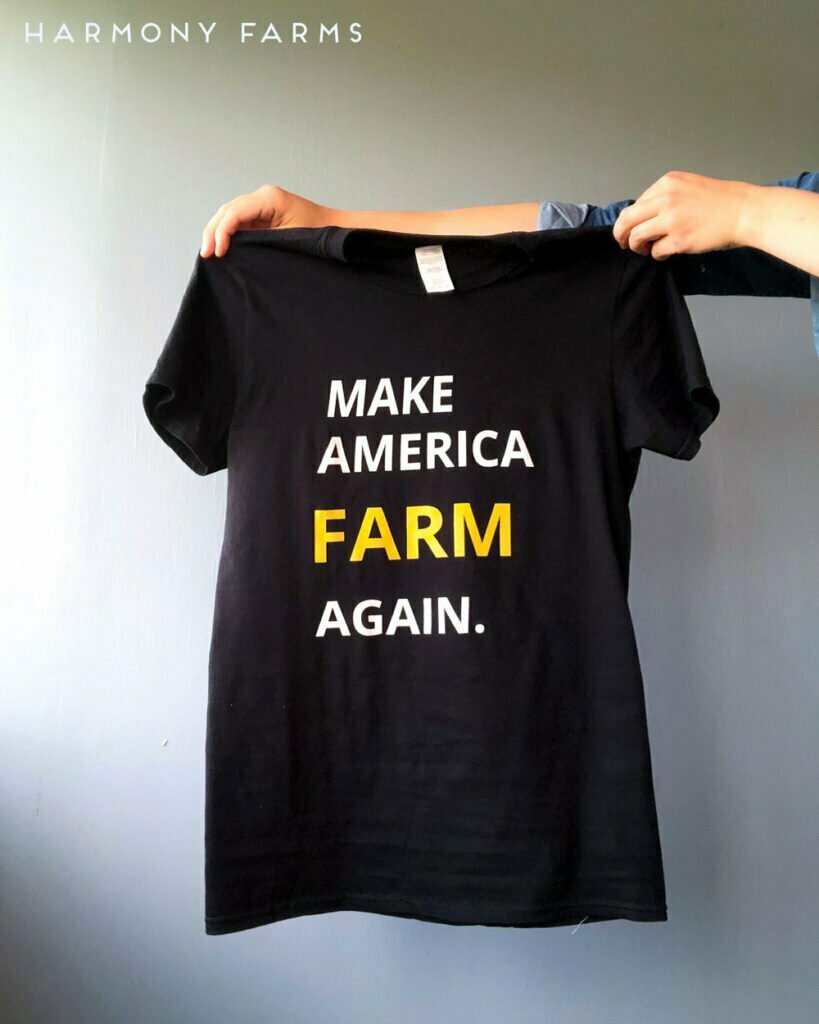
I did not make a ton of money in year 2 at all… but I had prototyped all of my ideas on a small scale and found viability .
I heard it said that when, starting a new business, the hardest money you will ever make is your first $1000. If you can survive that process, know that it won’t take much more effort to make $100k.
I have found that to be true.
Year 3: Go big or go home.
My newsletter list was growing really strong around the topic of sheep farming. I hosted my 2nd livestock sale in April of 2022, marketed it through that email newsletter, and sold out of all my sheep at shepherdess.com within 15 minutes.
I was elated… And then I thought: “Wait, that’s all my sheep for the year… what else can I sell?”
There were two FAQ’s that came to me again and again.
1: What books did you read as a beginner in raising livestock on pasture?
2: What kind of supplies do you use to take care of your sheep?

So I took these questions as cues and put the 5 books I read as a beginner in livestock at Shepherdess.com.
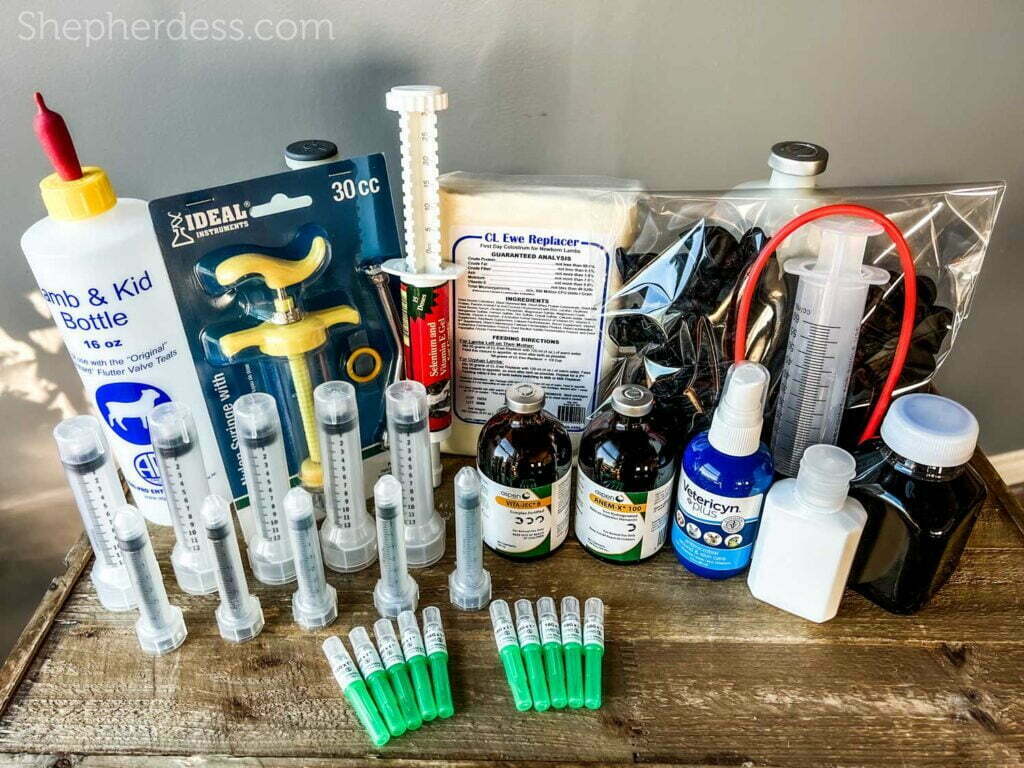
And I worked super hard and acquired distributorship for the 32 products I use to take care of my flock on an annual basis. It was something I had never done before, but the Lord opened doors.
I made both of these things available a Shepherdess.com, and by God’s grace, revenue tripled overnight… Because I found more than one way to meet the needs of the people I had spent two years connecting with…. through my email newsletter.
And that is the secret sauce. Listen to the people. Take your mind off of what you want to sell and listen to what they want.
I hope this summary helps you market your own farm!
-the Shepherdess
“So then neither is he that planteth any thing, neither he that watereth; but God that giveth the increase.” 1 Cor. 3:7
Reader Interactions
May 23, 2023 at 7:07 pm
great job way to show that you can do things the correct and ethical way and still be successful
May 24, 2023 at 4:03 pm
Thanks for your encouragement, Mike!
July 17, 2023 at 3:40 pm
Why do you have lots of different farm names, Harmony Farms, The Sheperdess, Lamb for Life, etc.? Do you have any recommendations on coming up with farm names?
July 18, 2023 at 3:30 pm
Hi Betty! I have different names for the different products and facets. My brand is the Shepherdess and my farm name is Harmony Farms. Here is a video I made on the topic: https://www.youtube.com/watch?v=DdNIj4g9Abc&t=26s
April 3, 2024 at 5:19 am
I very much admire your work and thinking.
Leave a Reply Cancel reply
Your email address will not be published. Required fields are marked *
Save my name, email, and website in this browser for the next time I comment.
Notify me of follow-up comments by email.
Notify me of new posts by email.
Get to know the farm!
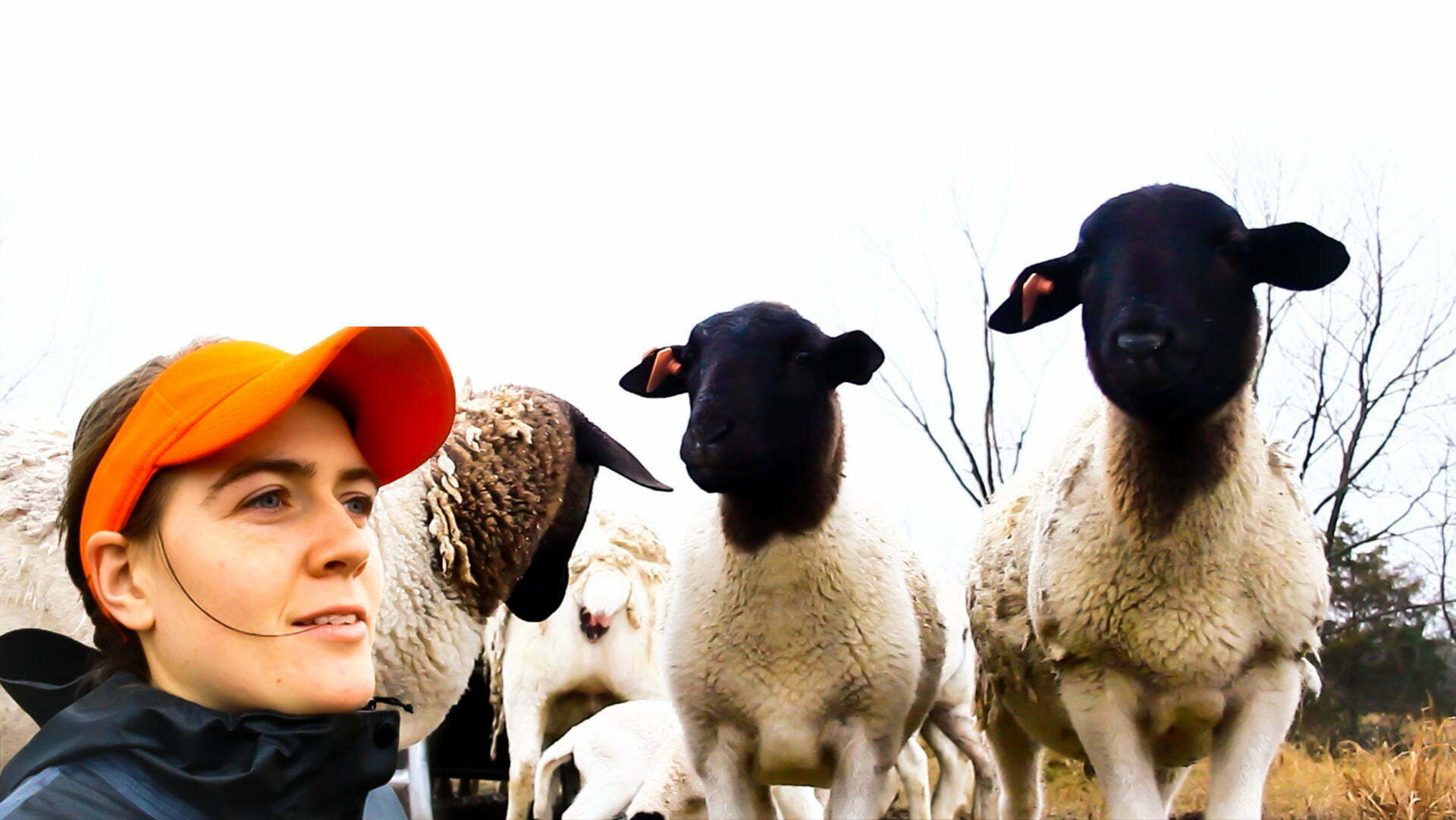
Contact Info
Harmony farms.
Main Street Sulphur Springs, TX, 75482, USA

Sheep Farming Business Plan [Sample Template]
By: Author Tony Martins Ajaero
Home » Business Plans » Agriculture Sector » Livestock Farming
Do you want to start a sheep farm and need to write a business plan ? If YES, here is a sample sheep farming business plan template & FREE feasibility report.
Sheep farming is a business that is becoming attractive and interested investors are channeling their monies in this industry. This is so because aside from the meat (mutton or lamb), products such as milk and wool and even the horns and hoofs are in high demand from related industries.
Another good news is that you can’t get it wrong because sheep meat (mutton or lamb) finds general acceptance in the world, especially among tribes that would rather not eat beef.
It is important to state that starting a sheep farming business comes with its own fair share of challenges, but that does not rule out the fact that it is indeed a profitable business venture. An aspiring entrepreneur can either choose to start it on a small or large scale depending on their financial status.
A Sample Sheep Farming Business Plan Template
1. industry overview.
Sheep farmers primarily raise or fatten sheep and lambs for their wool, meat, milk or sale to other farmers. Meat derived from these animals is separated into two categories, which include lamb and mutton. Lamb is meat from sheep less than one year old, while mutton refers to meat from sheep more than one year old.
There is no single sheep farming company that has dominate market share in the industry hence smaller sheep farming business can successfully make profits.
Statistics has it that in the united states of America alone, there are about 50,144 registered and licensed sheep farming business responsible for employing about 48,966 people and the industry rakes in a whopping sum of $621 million annually.
The industry was projected to enjoy 2.5 percent annual growth between 2014 and 2019. It is important to state that the sheep farming in the US industry has no companies with major market shares.
A recent report published by IBISWorld shows that that industry revenue will decline at an average annualized rate of 6.5 percent to $385.6 million over the five years to 2010. Sheep farming operations are shrinking, as the result of low demand and diminished production levels.
Meat production has particularly been hurt by the high level of imports, with lamb imports being significantly affected. Since lamb is considered a high-end meat, the economic downturn has caused disposable income levels to drop, consequently hurting consumer demand. With demand remaining low, prices have been negatively affected.
Wool production, another aspect of sheep farming, is continuing to decline as well. Wool yields per animal have decreased marginally, though prices are expected to remain high because of concerns about the Australian wool supply and strong global demand.
Still, profits are expected to fall at a relatively strong rate over the last five years, with the cost of feed rising and drought conditions threatening production. In light of these negative trends, farm numbers are expected to fall, with enterprise, establishment and employment numbers all declining.
One thing is certain about sheep farming business, if you are able to conduct your market research and feasibility studies, you are more likely not going to struggle to sell your sheep and its by products because loads of people out there eat mutton, drink milk and industries make use of byproducts from sheep in manufacturing their products.
Over and above there are few barriers to entry into the sheep farming industry. Usually, all inputs are readily available. In the nearest future, players in this industry may face the highest costs associated with accessing technology, especially in relation to genetic modification engineering in livestock breeding.
So also, intellectual property rights protecting new inventions and technology may mean that new entrepreneurs coming into the industry will need to pay license fees and this of course will cause increase in the startup fee for a sheep farming business.
2. Executive Summary
AB Pedro® Sheep Farms, LLC is a registered and licensed sheep farming company that will be based in the outskirt of Des Moines, Iowa – United States of America. We have done our detailed market research and feasibility studies and we were able to secure twenty acres of land to build our cattle ranch and start our sheep farming business.
Our sheep farming business is a going to be standard one hence will be involved in commercial breeding of sheep. In the nearest future, hopefully within the first five years of officially running AB Pedro® Sheep Farms, LLC, we will start our milk and wool processing plant and also start exporting our mutton and other by products to other parts of the world.
We are in the sheep farming business because we want to leverage on the vast opportunities available in the industry, to contribute our quota in growing the U.S. economy, in national food (meat and milk) production, raw material production for industries, to export agriculture produce from the United States to other countries and over and above to make profit.
AB Pedro® Sheep Farms, LLC is well positioned to become one of the leading sheep farming businesses in the United States of America, which is why we have been able to source for the best hands and equipment to run the business. We have put process and strategies in place that will help us employ best practices when it comes to sheep farming.
AB Pedro® Sheep Farms, LLC is a private registered sheep farming company that is owned by Andy Bryan Pedro and his immediate family members.
Before starting AB Pedro® Sheep Farms, LLC, Andy Bryan Pedro has worked with some of the leading livestock farms in the United States of America. He has worked in the industry for over 20 years before resigning to start his own sheep farming business.
3. Our Products and Services
AB Pedro® Sheep Farms, LLC is a licensed sheep farming business that is committed to producing meat and products such as milk and wool and even the horns and hoofs of sheep. We are in this line of business to make profits and we will ensure that we do all that is permitted by the law to achieve our business aim and objectives.
These are the areas we will concentrate on in our sheep farming business. If need arises, we will definitely add more related services to our list;
- Sheep farming (e.g. for meat, milk and wool production or herd replacements)
- Lamb feedlots (except stockyards for transportation)
- Sale of processed sheep meat and products such as milk and wool and even the horns and hoofs
4. Our Mission and Vision Statement
- Our Vision is to be listed among the top 5 sheep farming business not just in Des Moines – Iowa, but also in the United States of America.
- Our mission is to sell our sheep meat and products such as milk and wool in commercial quantities both locally, nationally and internationally.
- We want to build a sheep farming business that can favorably compete with other leading brands in the United States of America.
Our Business Structure
AB Pedro® Sheep Farms, intends starting small in Des Moines – Iowa, but hopes to grow big in order to compete favorably with leading sheep farms in the industry. We are aware of the importance of building a solid business structure that can support the kind of world class business we want to own.
At AB Pedro® Sheep Farms, LLC, we will ensure that we hire people that are qualified, hardworking, dedicated, customer centric and are ready to work to help us build a prosperous business that will benefit all the stakeholders.
As a matter of fact, profit-sharing arrangement will be made available to all our senior management staff and it will be based on their performance for a period of five years or more as agreed by the management of the farm. In view of the above, we have decided to hire qualified and competent hands to occupy the following positions; Below is the business structure of AB Pedro® Sheep Farms, LLC;
- Chief Operating Officer
General Farm Manager
- Administrator / Accountant
- Sheep Ranch Manager / Supervisor
- Sales and Marketing Executive
- Field Employees
- Front Desk Officer
5. Job Roles and Responsibilities
Chief Operating Officer:
- Increases management’s effectiveness by recruiting, selecting, orienting, training, coaching, counseling, and disciplining managers; communicating values, strategies, and objectives; assigning accountabilities; planning, monitoring, and appraising job results
- Responsible for providing direction for the business
- Creating, communicating, and implementing the organization’s vision, mission, and overall direction – i.e. leading the development and implementation of the overall organization’s strategy.
- Responsible for signing checks and documents on behalf of the company
- Evaluates the success of the organization
- Responsible for the planning, management and coordinating all farm activities
- Supervise other section manager
- Ensure compliance during project executions
- Providing advice on the management of farming activities across all section
- Responsible for carrying out risk assessment
- Using IT systems and software to keep track of people and progress of the growth of sheep
- Represent the organization’s interest at various stakeholders’ meetings
- Ensures that farming goals desired result are achieved, the most efficient resources are utilized and different interests involved are satisfied.
- Oversee the smooth running of the sheep farming activities across the various farming sections.
Administrator/Accountant
- Responsible for overseeing the smooth running of HR and administrative tasks for the organization
- Defining job positions for recruitment and managing interviewing process
- Carrying out induction for new team members
- Responsible for training, evaluation and assessment of employees
- Responsible for preparing financial reports, budgets, and financial statements for the organization
- Responsible for financial forecasting and risks analysis.
- Responsible for developing and managing financial systems and policies
- Responsible for administering payrolls
- Ensuring compliance with taxation legislation
- Handles all financial transactions for the company
- Serves as internal auditor for the company
Sheep Farming Manager/Supervisor
- Responsible for managing the breeding of sheep
- Responsible for managing boarding services, breeding services, dairy support services, livestock health services, farrier services, and shearing services et al.
- Work closely with the General Manager to achieve the organizations’ goals and objectives
Sales and Marketing Officer
- Identify, prioritize, and reach out to new partners, and business opportunities et al
- Identifies development opportunities; follows up on development leads and contacts
- Writing winning proposal documents, negotiate fees and rates in line with company policy
- Responsible for handling business research, marker surveys and feasibility studies for clients
- Responsible for supervising implementation, advocate for the customer’s needs, and communicate with clients
- Document all customer contact and information
- Represent the company in strategic meetings
- Help increase sales and growth for the company
Field Workers/Contract Staff
- Responsible for feeding sheep as instructed by the supervisor
- Responsible for cleaning the sheep ranch
- Change the water in the water trough / trench as instructed by the supervisor on a regular basis
- Assist in handling the breeding of sheep
- Carries out task in line with the stated job description
- Assist in transport working tools and equipment from the farm and back to the designated store room
- Handles any other duties as assigned by the farm manager
Client Service Executive/Front Desk Officer
- Welcomes guests and clients by greeting them in person or on the telephone; answering or directing inquiries.
- Ensures that all contacts with clients (e-mail, walk-In center, SMS or phone) provides the client with a personalized customer service experience of the highest level
- Through interaction with clients on the phone, uses every opportunity to build client’s interest in the company’s products and services
- Manages administrative duties assigned by the cattle ranch manager in an effective and timely manner
- Consistently stays abreast of any new information on the company’s products, promotional campaigns etc. to ensure accurate and helpful information is supplied to clients
- Receives parcels / documents for the company
- Distribute mails in the organization
- Handles any other duties as assigned by the line manager
6. SWOT Analysis
AB Pedro® Sheep Farms, LLC do not intend to launch out with trial and error hence the need to conduct a proper SWOT analysis.
We know that if we get it right from the onset, we would have succeeded in creating the foundation that will help us build a standard sheep farming business that will favorably compete with leading sheep farming businesses in the United States of America.
Here is a summary from the result of the SWOT analysis that was conducted on behalf of AB Pedro® Sheep Farms, LLC;
Our strength as a sheep farming business is the fact that we have healthy relationships with loads of major players in the industry within and outside of the United States. We have some of the latest tools and equipment that will help us breed our sheep and generate milk and wool in commercial quantities with less stress.
Aside from our relationship (network) and equipment, we can confidently boast that we have some the most experienced hands in Sheep Farming industry in our payroll.
Our weakness could be that we are a new sheep farming business in the United States and we may not have the required cash to pump into the publicity of our business. We are aware of this and from our projection will overcome this weakness with time and turn it to a major advantage for the business.
- Opportunities:
Red meat prices dictate the returns for American cattle ranches and feedlots. Increased prices generate an increase in returns per head for farmers.
Sheep and lamb yield red meat, and red meat prices dictate returns to sheep producers. As the price of red meat increases, so too does industry revenue. The price of red meat is expected to rise in the coming year, representing a huge potential opportunity for the industry.
Disease can reduce the national sheep flock and negatively affect industry operators. Additionally, consumer concerns about food safety following disease outbreaks can adversely affect downstream demand for lamb and mutton. While there is no way to anticipate an outbreak, the threat of disease in US livestock negatively affects the industry.
7. MARKET ANALYSIS
- Market Trends
Despite the fact that commercial cattle rearing or better still sheep farming has been in existence since time immemorial, that does not in any way make the industry to be over saturated; commercial sheep farmers are exploring new technology to continue to improve cattle rearing processes and also meat and milk preservation and packaging process.
The fact that there is always a ready market for mutton and its by products makes the business ever green. With the recent advancement in technology, livestock farmers can now improve the various breeds of the animals they are breeding.
As a matter of fact, it is now easier for sheep farming businesses to comfortably import the kind of breed they want from any country of their choice.
8. Our Target Market
The end consumers of mutton and its products and also those who benefit from the business value chain are all encompassing; it is far – reaching. Almost every household consumes produce from sheep farms be it meat, milk, wool, hoof, horns and the skin (leather) used for bags, belts and shoe production et al.
So also, a large chunk of manufacturing companies depends on sheep farming businesses for some of their raw materials.
In essence a sheep farmer should be able to sell his or her farm produce to as many people as possible. We will ensure that we position our business to attract consumers not just in the United States of America alone but also other parts of the world which is why we will be exporting some of our products to other countries of the world.
Our Competitive Advantage
AB Pedro® Sheep Farms, LLC is fully aware that there are competitions when it comes to selling mutton or lamb and its by products, which is why we decided to carry out thorough research so as to know how to take advantage of the available market in the United States and in other parts of the world.
We have done our homework and we have been able to highlight some factors that will give us competitive advantage in the marketplace; some of the factors are effective and reliable sheep farming processes that can help us sell our products at competitive prices, good network and excellent relationship management.
Lastly, our employees will be well taken care of, and their welfare package will be amongst the best in the industry meaning that they will be more than willing to build the business with us and help deliver our set goals and objectives.
9. SALES AND MARKETING STRATEGY
- Sources of Income
AB Pedro® Sheep Farms, LLC is in the Sheep Farming industry for the purpose of maximizing profits hence we have decided to explore all the available opportunities within the industry to achieve our corporate goals and objectives. Below are the sources we intend exploring to generate income for AB Pedro® Sheep Farms, LLC;
- Sale of processed sheep meat (mutton or lamb), and products such as milk and wool and even the horns and hoofs
10. Sales Forecast
From the survey conducted, we were are able to discover that the sales generated by a commercial sheep farming businesses depend on the size of the ranch, the network of the business and of course the quantity of meat they can produce per time.
We have perfected or sales and marketing strategies and we are quite optimistic that we will meet or even surpass our set sales target of generating enough income / profits from the year of operation and build the business from survival to sustainability.
We have been able to examine the Sheep Farming industry, we have analyzed our chances in the industry and we have been able to come up with the following sales forecast. Below are the projections that we were able to come up with for the first three years of running AB Pedro® Sheep Farms, LLC;
- First Fiscal Year (FY1): $280,000
- Second Fiscal Year (FY2): $450,000
- Third Fiscal Year (FY3): $700,000
N.B : This projection was done based on what is obtainable in the industry and with the assumption that there won’t be any major economic meltdown that can impact negatively on household spending, bad weather cum natural disasters, and unfavorable government policies .
- Marketing Strategy and Sales Strategy
We are quite aware that the reason why some sheep farming businesses hardly make good profits is their inability to sell off their produce to a larger market. In view of that, we decided to partner with some of the leading sheep merchants to help us maximize profits.
In summary, AB Pedro® Sheep Farms, LLC will adopt the following strategies in marketing our mutton and other products;
- Introduce our business by sending introductory letters alongside our brochure to hotels, restaurants, caterers, merchants that deal in sheep meat (mutton or lamb), and products such as milk and wool and even the horns and hoofs sheep and key stake holders in and around Des Moines – Iowa.
- Advertise our business and livestock farms in agro – allied and food related magazines and websites
- List our sheep farming business on yellow pages ads (local directories)
- Attend related agriculture and food expos, seminars, and business fairs et al
- Leverage on the internet to promote our business
- Engage in direct marketing
- Encourage the use of Word of mouth marketing (referrals)
11. Publicity and Advertising Strategy
Any business that wants to grow beyond the corner of the street or the city they are operating from must be ready and willing to utilize every available means to advertise and promote the business. We intend growing our business which is why we have perfected plans to build our brand via every available means.
Below are the platforms we want to leverage on to boost our sheep farming brand and to promote and advertise our business;
- Place adverts on both print (newspapers and magazines) and electronic media platforms
- Sponsor relevant community – based events / programs
- Leverage on the internet and social media platforms like; Instagram, Facebook, twitter, YouTube, Google + et al to promote our business
- Install our Billboards on strategic locations all around Des Moines – Iowa
- Distribute our fliers and handbills in target areas
- List our commercial sheep farms in local directories / yellow pages
- Advertise our commercial sheep farm in our official website and employ strategies that will help us pull traffic to the site.
- Ensure that all our staff members wear our branded shirts and all our vehicles and trucks are well branded with our company logo et al.
12. Our Pricing Strategy
Sale prices for sheep meat and products such as milk and wool and even the horns and hoofs of sheep are subject to fluctuation as part of the sheep cycle of financial markets. The relatively long period it takes sheep farmers to build up a sheep herd and raise new sheep and lamb to the desired weight tends to extend the length of such a cycle.
Generally speaking, a sheep will cost between $2,000 and $3,000. The actual cost depends on the weight of the sheep, the gender, and the breed. Yearlings usually sell for between $800 and $1,500. Sheep will also differ in price based on whether or not they are dairy sheep or wool sheep or meat sheep.
We are quite aware that one of the easiest means of penetrating the market and acquiring loads of customers is to sell our products at competitive prices.
One thing is certain, the nature of sheep farming business we are involved in makes it possible for farmers to place prices for their sheep based on their discretion without following the benchmark in the industry. The truth is that it is one of the means of avoiding running into loss. The easier you sell off your sheep when they are mature the better for your business.
- Payment Options
The payment policy adopted by AB Pedro® Sheep Farms, LLC is all inclusive because we are quite aware that different customers prefer different payment options as it suits them but at the same time, we will ensure that we abide by the financial rules and regulation of the United States of America.
Here are the payment options that AB Pedro® Sheep Farms, LLC will make available to her clients;
- Payment via bank transfer
- Payment with cash
- Payment via online bank transfer
- Payment via check
- Payment via Point of Sale Machines (POS Machines)
- Payment via mobile money transfer
- Payment via bank draft
In view of the above, we have chosen banking platforms that will enable our clients make payment of sheep purchase without any stress on their part. Our bank account numbers will be made available on our website and promotional materials.
13. Startup Expenditure (Budget)
Below are some of the basic areas we will spend our startup capital in setting up our sheep farming business/cattle ranch;
- The total fee for incorporating the business in United States of America – $750.
- The budget for key insurance policies, permits and business license – $2,500
- The amount needed to acquire / lease a farm land – $150,000
- The amount required for preparing the farm land (for construction of cattle ranch and cages / fencing et al et al) – $100,000
- The cost for acquiring the required working tools and equipment / machines / fencing et al – $50,000
- The amount required for purchase of the first set of sheep, feeds, medication and other supplies – $150,000
- The cost of launching an official website – $600
- The amount required for payment of workers for a period of 3 months – $100,000
- Additional Expenditure (Business cards, Signage, Adverts and Promotions et al) – $2,000
Going by the report from detailed research and feasibility studies conducted, we will need an average of four hundred and fifty thousand dollars ($450,000) to start a standard sheep farming business in the United States of America.
Generating Funds/Startup Capital for AB Pedro® Sheep Farms, LLC
No matter how fantastic your business idea might be, if you don’t have the required money to finance the business, the business might not become a reality. Finance is a very important factor when it comes to starting a business such as sheep farming business.
No doubt raising startup capital for a business might not come cheap, but it is a task that an entrepreneur must go through.
AB Pedro® Sheep Farms, LLC is a family owned business and it will be financed by Andy Bryan Pedro and his immediate family members. These are the areas where we intend sourcing for fund for Jonah Livingston and Family Farms Ltd;
- Generate part of the startup capital from personal savings and sale of his stocks
- Generate part of the startup capital from friends and other extended family members
- Generate a larger chunk of the startup capital from the bank (loan facility).
N.B: We have been able to generate about $200,000 (Personal savings $150,000 and soft loan from family members $50,000) and we are at the final stages of obtaining a loan facility of $250,000 from our bank. All the papers and documents have been duly signed and submitted, the loan has been approved and any moment from now our account will be credited.
14. Sustainability and Expansion Strategy
Part of the plans we have in place to sustain AB Pedro® Sheep Farms, LLC is to ensure that we continue to make available in commercial quantities sheep meat (mutton or lamb), and products such as milk and wool and even the horns and hoofs of sheep, deliver quality services, improvise on how to do things faster and cheaper.
We are not going to relent in providing conducive environment for our workers and also the required trainings that will help them deliver excellent services at all times.
From our findings, another factor that kills new businesses is financial leakages. In order to plug financial leakages, the management of AB Pedro® Sheep Farms, LLC adopted the use of payment machine and accounting software to run the business.
We are quite aware that our customers are key component to the growth and survival of our business hence we are going to continuously engage them to give us ideas on how to serve them better. We will not waste time in adopting new technology, and international best practices as it relates to the production of sheep meat and its by products such as milk and wool and even the horns and hoofs of sheep.
AB Pedro® Sheep Farms, LLC will make sure that the right foundation, structures and processes are put in place to ensure that our staff welfare are well taken of. Our company’s corporate culture is designed to drive our business to greater heights and training and retraining of our workforce is at the top burner.
We know that if that is put in place, we will be able to successfully hire and retain the best hands we can get in the industry; they will be more committed to help us build the business of our dreams.
Check List/Milestone
- Business Name Availability Check : Completed
- Business Incorporation: Completed
- Opening of Corporate Bank Accounts : Completed
- Opening Online Payment Platforms: Completed
- Application and Obtaining Tax Payer’s ID: In Progress
- Application for business license and permit: Completed
- Purchase of Insurance for the Business: Completed
- Leasing of farm land in Des Moines – Iowa: Completed
- Conducting Feasibility Studies: Completed
- Startup Capital Generation: Completed
- writing of business plan: Completed
- Drafting of Employee’s Handbook: Completed
- Design of The Company’s Logo: Completed
- Printing of Packaging and Promotional Materials: Completed
- Recruitment of employees: In Progress
- Building /construction of cages and fence et al: In Progress
- Purchase of the first set of sheep, feeds and medications: Completed
- Purchase of the needed working tools, machines and equipment: Completed
- Creating Official Website for the Company: In Progress
- Creating Awareness for the business (Business PR): In Progress
- Farm land Treatment, Health and Safety Arrangement: In Progress
- Establishing business relationship with key players in the industry (agriculture farm produce merchants, beef jerky businesses, abattoir operators and transporter / haulage): Completed
Related Posts:
- Beef Cattle Farming Business Plan [Sample Template]
- Poultry Farming Business Plan [Sample Template]
- Turkey Farming Business Plan [Sample Template]
- Quail Farming Business Plan [Sample Template]
- Honey Beekeeping Farm Business Plan [Sample Template]

Sheep Farming Business Plan: Definitive Guide

Table of Contents
What you need in your sheep farming business plan
Here are some basic components of a sheep farming business plan:
- Cover sheet : The front page of your business plan. This gives an overview of what the rest of the pages will present.
- Executive summary : This gives a more detailed overview than the cover sheet, highlighting the most pertinent parts of your business plan.
- Business description : Describes what your business is, who it caters to, and the types of services you offer.
- Production plan : Contains the resources, approaches, and techniques you need to use to end up with the products you will eventually offer to your market.
- Marketing plan : This describes your target market, the communication channels where you can find them, and techniques to start engaging with them and promoting your product or service.
- Financial plan : This contains the monetary aspects of the business, such as your overall budget, the breakdown of your budget, and your goals to reach your target income.
- SWOT Analysis : It documents your and your business’s strengths, weaknesses, opportunities, and threats .
- Job Roles and Responsibilities : This outlines the roles to be filled in your business. How many people will it take to run your operation? What will their roles be?
Sheep farming business plan template

Below are a selection of farming business plan templates that you can use to inspire your own business plan:
- Farming Business Plan (government of Wales)
- Strategic Business Guide (Beef + Lamb, New Zealand)
- Small Farm Business Plan (Oregon State University)
- Sheep & Goat Farm Business Plan (Farmers’ Marketing Institute)
Questions to ask as you create your business plan
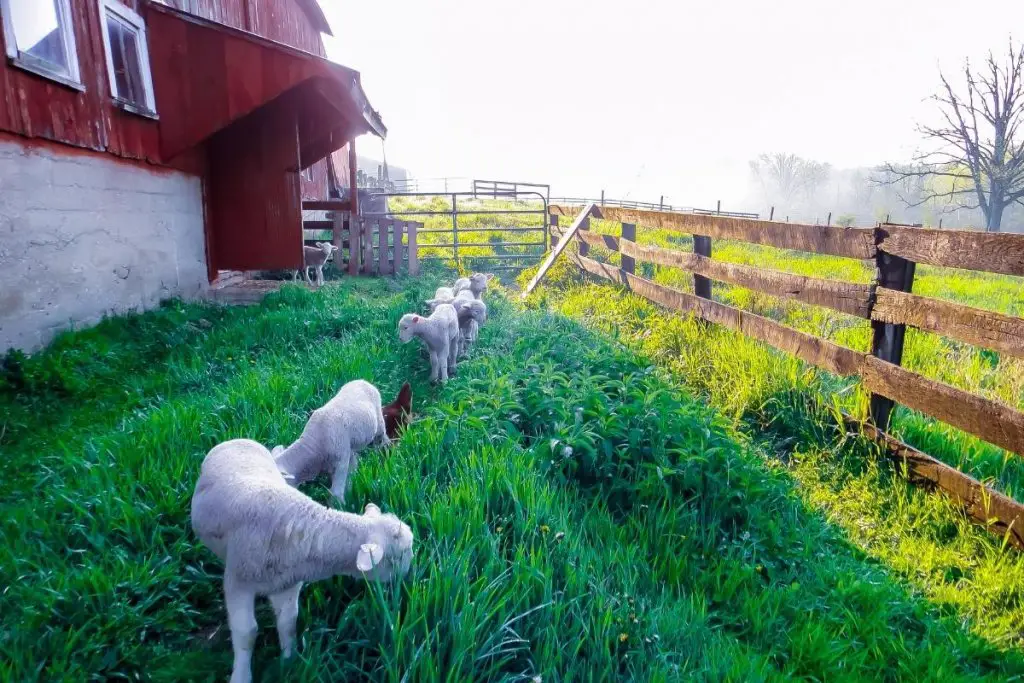
Here are some questions to ask yourself to give your sheep farm the best chance of success you possibly can:
- Start by deciding how big you envision your sheep farm. Is this a hobby farm (small-scale) or a larger business?
- How many sheep do you plan to have?
- Are there any restrictions on what kind of sheep you can raise? Do you need to abide by certain state or federal regulations?
- Is this a family farm? If not, how many employees do you plan to have?
- How much land do you already have? Do you need to acquire more land?
- Which type of farm will best suit your needs and goals?
- What are your goals?
- What are challenges will you face as a sheep farmer?
- What are your strengths and weaknesses?
- Where do you see yourself in five years?
- What assets do you have now that can help you with your business?
- What kind of facilities do you have now?
- How much money do you have set aside for this project right now?
- How will you manage labor and equipment costs?
- What kind of market research have you done on the local sheep industry in your area?
- Who is your target market?
- Are there any laws or regulations that may affect or restrict what can be done on a sheep farm in the area where you intend to do business (such as zoning laws)?
Designing a profitable sheep farm
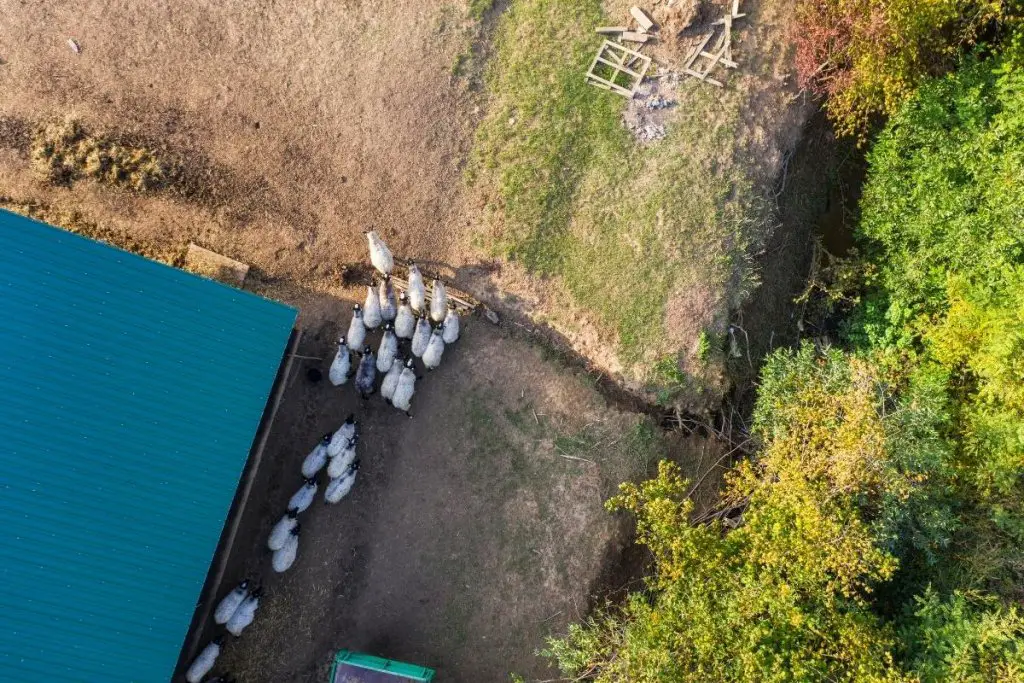
If you want to make your farm as profitable as possible, make sure to consider the below points carefully:
- Pick your primary commodity : What sheep products do you want to sell? Are you producing meat, milk, wool, or all three? Meat tends to be the most profitable.
- Choose your preferred breed of sheep : Some breeds of sheep are more profitable than others. If you’re raising meat sheep, for example, you’ll likely want a hair sheep that puts on weight quickly and is as low-maintenance as possible. The Dorper, Katahdin, and the American Blackbelly are generally recognized as relatively profitable, low-maintenance breeds.
- Manage your sheep’s nutrition : Remember, your sheep are your livelihood. What they eat impacts the quality of the final product. Make sure they get the nutrition they need.
- Prepare ahead : Don’t be caught off-guard for predictable events like changes in weather or lambing season. Avoid costly mistakes by preparing in advance.
Startup budget for a sheep farm
Part of your business plan should cover the rough numbers involved in getting your business going.
This is particular to each business, but a few large capital expenditures universal to sheep farmers are:
- The cost of your sheep (for a rough number, assume around $400 per sheep)
- The cost of your sheep barn or sheep shed, as well as the fencing on your property. Sheep fencing will be one of your largest startup costs, especially if your property is big.
- Other startup costs include sheep shearing equipment, milking equipment, basic veterinary care equipment, and sheep drench.
Joanne is a nocturnal person who loves traveling and coffee. She’s also an animal lover (and rescuer) who makes it a point to befriend every animal she meets. Her passion for learning led her to writing about various topics. As someone who dreams of becoming an “animal whisperer,” she aims to continue learning about animals–particularly sheep, and at the same time, share her knowledge here at Sheep Caretaker.
Recent Posts
Enterotoxemia In Sheep Explained
Enterotoxemia in sheep, also known as overeating disease, causes sheep to be lethargic and stop eating, among other symptoms. A change in diet often triggers it—for example, an increase in grain...
Hairy Sheep Breeds: All You Need To Know
While the stereotypical sheep is white and woolly, some of the largest commercial sheep operations in the world use hairy sheep instead of wooly sheep. Hair breeds, including the Royal White,...
- Best Products
How to Start Sheep Farming Business – Complete Guide
- March 6, 2024
- by Next What Business Research Team
Do you want to start a small sheep farm business with a small investment? If YES, find here a commercial sheep farming business plan guide for your livestock startup.
Raising sheep is indeed a profitable business. Investing little money, any individual can start raising sheep even with other livestock. Generally, sheep farming comes under the animal husbandry segment.
Globally, this is a traditional livestock business . Sheep provide meat, milk, and wool. Even, you can earn money from selling skin and manure also. Apart from the domestic market, the products have good international demand. So, the business has the potential of earning foreign currency also.
Benefits of Sheep Farming Business
- First of all, you can start the business with a small investment and space. The business doesn’t demand huge capital to start.
- The business requires less labour for daily maintenance and care. Thus, you can run the farm with less working capital investment.
- Sheep give birth to kids frequently. So, you can create a large size herd within a short period.
- Sheep require less space for living. Even you can raise sheep with your other livestock animals.
- Additionally, you don’t need to build expensive housing for the sheep. So, it allows you to maintain your cost early.
- Sheep eat different kinds of plants. So you don’t need to provide high-quality feeds all the time.
- Sheep are very hardy animals. They can adapt to almost all types of environments. So, you can raise sheep in a wide range of temperate climates, including arid zones.
- Finally, the products you get from sheep-like meat, wool, and milk have high demand in the market. So, sheep farming is a commercially lucrative business for entrepreneurs who want to start a livestock business.
Read: How To Get an Agriculture Loan
8 Steps to Start Sheep Farming Business
Step 1: business plan.
Regardless of the size of your sheep farm, you must craft a business plan . Your sheep farming business plan must consist of a financial analysis, marketing strategy, and income revenue calculations. Here is a breakdown of the key components to include in your sheep business plan:
⇒ Executive Summary
Provide an overview of your sheep farming business, including your vision, mission, objectives, and key highlights of the business plan.
⇒ Business Description
Describe your sheep farming operation, including the type of sheep (breeds), the size of your flock, and the products you intend to produce (e.g., wool, meat, milk). Explain the location of your farm, including details about the land, facilities, and infrastructure available for sheep management.
Read: Top Agriculture Software Solutions
⇒ Market Analysis
Conduct a thorough analysis of the sheep farming industry, including market trends, demand for sheep products, and potential competitors in your target market. Identify your target customers and their preferences for sheep products, such as wool quality, meat cuts, or speciality items.
⇒ Marketing and Sales Strategy
Outline your marketing approach to promote your sheep products and attract customers. This may include strategies such as online marketing, farmer’s markets, direct sales, or partnering with local retailers. Define your pricing strategy based on production costs, market demand, and competitor pricing.
⇒ Operational Plan
Detail the day-to-day operations of your sheep farming business, including feeding and nutrition management, breeding programs, health care protocols, and shearing schedules. Describe your management team and their roles in overseeing different aspects of the farm operations.
⇒ Financial Plan
Develop a detailed financial plan that includes startup costs, operational expenses, revenue projections, and profitability analysis. Include a budget for acquiring sheep, purchasing feed and supplies, building infrastructure, hiring labour, and covering other operational expenses. Estimate your expected revenue from sheep products (wool, meat, milk) based on market prices and sales volumes.
⇒ Risk Management
Identify potential risks and challenges associated with sheep farming, such as disease outbreaks, adverse weather conditions, market fluctuations, and regulatory compliance issues. Outline strategies to mitigate these risks, such as implementing biosecurity measures, diversifying product offerings, and maintaining emergency funds.
⇒ Regulatory Compliance
Research and understand the legal and regulatory requirements for sheep farming in your location, including permits, licenses, and animal welfare standards. Ensure compliance with environmental regulations, zoning laws, and food safety standards related to sheep products.
⇒ Exit Strategy
Outline your exit strategy in case you need to sell the farm or transition out of the sheep farming business. Consider factors such as market conditions, asset valuation, and succession planning.
⇒ Appendices
Include any additional information or supporting documents relevant to your sheep farming business plan, such as market research data, resumes of key team members, and supplier agreements.
Step 2: Identify a Location
If you already have a location of your own then it’s good. Otherwise, you will need to identify and select a location for setting up the farm. The area required depends on the size of the farm and the population of the livestock you want to keep on your farm. Set up fencing to secure the grazing area and prevent predators from accessing the flock.
Location plays an important role in the overall success of your sheep farm. Ensure that the space is clean enough and has a clean water resource. Additionally, check the availability of an adequate amount of greens and easy transport facilities. Also, don’t establish the farm in a location that is very far from the local market.
Step 3: Procure Quality Breeds
Procure quality breeds from either trusted breeders or responsible farmers. Generally, you can find numerous sheep breeds throughout the world. However, all those breeds are not suitable for farming in all areas. So, you will need to procure the breeds according to the agroclimatic condition of your location.
Additionally, you will need to select the breed according to the specific demand. Some breeds are suitable for commercial meat production and some breeds are suitable for wool production. So, choose suitable breeds according to your desired production purpose. Some of the most popular sheep breeds are the following:
- Rambouillet
Step 4: Build the Housing
Building the right housing is one of the most important aspects of establishing the sheep farm. You must provide housing that can protect the sheep from adverse climatic situations. You can provide a simple shade to house the sheep.
However, you must construct the shade in an elevated area to prevent water stagnation. Additionally, you can grow fodder trees around the shades and use the space as grazing land. Finally, the entire house must have a sufficient ventilation facility.
For a comfortable house east to west orientation with generous provision for ventilation /air movement to dry the floor is suitable. However, the most suitable is a thatched roof due to its cheaper cost and durability. However, you can also use corrugated asbestos sheets for organized farms to minimize recurring costs and to have longer durability.
Generally, an adult sheep requires about 20 square feet of floor space. For example, if you intend to raise 10 sheep, then you have to make a house with 10 feet long and 20 feet wide. Keep the roof at least 6 feet high from the floor.
Different Shades of Organized Sheep Farm
- General flock shed (Ewe / Doe shed)
- Ram or buck shed
- Lambing or kidding shed
- Lamb or kid shed
- Sick animal shed
- Shearing and storeroom
- Attendant’s room
Step 5: Feeding
You must provide proper feeding for the best result. Additionally, you will need to provide the food according to gender and age. Good-quality hay or stored forage is a highly productive feed for your sheep farm.
The period from weaning to the breeding of ewes is critical if a high twinning rate is desired. Ewes should not be allowed to become excessively fat but should make daily gains from weaning to breeding. During the last 6–8 wk of pregnancy, the growth of the fetus is rapid. This is a critical period nutritionally, particularly for ewes carrying more than one fetus.
Beginning 6–8 wk before lambing, you must increase the plane of nutrition gradually and continue without interruption until after lambing. The amount offered depends on the condition or fat covering of the eyes and the quality of the forage.
If ewes are in fair to good condition, 0.5–0.75 lb (225–350 g) daily is usually sufficient. The roughage content of the ration should provide all the protein required for all nonlactating ewes. If necessary, you can classify the ewes according to age, condition, and number of fetuses and divide them into groups for different treatments.
Step 6: Care and Management
You will need to provide good care and management to get the maximum profitability of your farm. Broadly, you will need to procure quality breeds and provide good housing and food. Additionally, maintain the cleanliness of your farm. In addition to that, provide the right vaccination to your sheep. If you notice any sick sheep, separate the animal promptly, and provide proper treatment.
To obtain the optimum profit, always tap the local market of the products. It helps to keep the transportation cost less. Additionally, always think about the other marketing avenues to get the maximum profits from your sheep farming business.
Step 7: Marketing and Sales
Identify potential markets for sheep products such as wool, meat, and specialty products like dairy sheep milk or artisanal wool products. Develop a marketing strategy to promote your products through farmer’s markets, online platforms, direct sales to consumers, or wholesale to retailers.
Step 8: Record Keeping and Financial Management
Maintain detailed records of flock management, breeding records, health treatments, and financial transactions. Monitor expenses and revenues to assess the profitability of the sheep farming business and make informed management decisions.
- Agri Business
- Agri Insurance
- Agriculture
- Aquaculture
- Farm Machinery
- Feed Management
- Horticulture
- Livestock Farming
- Modern Farming
- Organic Farming
- Pests and Diseases
- Plant Nutrition
- Poultry Farming
- Project Reports
- Schemes/Subsidies/Loans
- Success Stories

How To Write a Business Plan for Sheep Farming in 9 Steps: Checklist
By alex ryzhkov, resources on sheep farming.
- Financial Model
- Business Plan
- Value Proposition
- One-Page Business Plan
- SWOT Analysis
- Business Model
- Marketing Plan
- Bundle Business Plan & Fin Model
Sheep farming is a lucrative business with huge potential for growth as the demand for wool, meat, and hides continues to soar. According to recent statistics , the global wool production industry alone is projected to reach $44.8 billion by 2025.
Starting a sheep farming business involves a lot of planning and preparation. To ensure success, aspiring sheep farmers need to follow a comprehensive plan that takes into account factors such as market research, location, and financing options.
If you're interested in starting a sheep farming business, this comprehensive checklist will guide you through the nine essential steps needed to create a successful sheep farming business plan, from conducting market research to seeking funding and financing options.
By following this step-by-step guide, you'll be well on your way to establishing a profitable sheep farming business that can help meet the growing demand for high-quality wool, meat, and hides.
Conduct Market Research And Analysis
Before starting a sheep farming business, it's essential to research and analyze the market to ensure there is a demand for the products and services you'll be offering. Market research will also help you identify your target audience, competition, and industry trends.
- Identify your target market: Determine who your ideal customers are. Are you targeting the local community, or are you looking to sell to a wider audience?
- Analyze the competition: Study the competition in your area and identify their strengths and weaknesses. Check out their pricing, products, and marketing strategies to see what works and what doesn't.
- Identify industry trends: Analyze the sheep farming industry to get a sense of current trends, including consumer demand and production methods. Stay up-to-date on any developments or changes in the industry that may impact your business.
- Determine pricing: Research the price of sheep products, including wool, meat, and dairy, to determine what you'll charge. Be sure to factor in costs such as labor, feed, and equipment.
- Check online industry resources and forums to get a better understanding of the industry.
- Attend farming events or conferences to connect with other farmers and build your network.
- Ask potential customers about their needs and preferences when it comes to sheep products.
By conducting thorough market research, you can determine whether a sheep farming business is a viable and profitable endeavor. It also enables you to identify opportunities for growth and position your business for success.
Develop A Business Model That Takes Into Consideration The Cost Of Land Purchase, Fencing And Equipment, Water, And Feed, And Labor Costs.
When starting a sheep farming business, it's essential to have a clear understanding of the costs associated with the venture. Developing a solid business model that takes into consideration the cost of land purchase, fencing and equipment, water, and feed, and labor costs is crucial to ensuring the business's long-term success.
The first step in developing a business model is to calculate the cost of land purchase . The cost of land can vary significantly depending on location, size, and the condition of the soil. When checking for the availability and cost of the land, it's important to consider environmental factors like access to water, climate stability, and the potential for natural disasters.
The next cost to consider is that of fencing and equipment . Depending on the size of the farm, you may need to include the cost of materials like wire, posts, and gates. Additionally, you may need to purchase equipment like tractors, mowers, and trailers. To save money on equipment costs, you may look into leasing or borrowing equipment until the farm is established.
The next cost factor to consider is that of water and feed . Sheep need access to clean water and a balanced diet that includes hay, grain, and supplements. It's estimated that each sheep needs 2 to 3 gallons of fresh water per day and around 2 to 4 pounds of feed per day. It's important to factor in the cost of these essentials when establishing a budget for the farm.
Finally, the cost of labor is another important factor. You will need to pay for employees to help with feeding, watering, and monitoring the health of the animals. If you plan to offer other services like shearing and transportation, you will also need to factor in labor costs for those services. To save on labor expenses, you may consider hiring part-time or seasonal employees.
Tips for Developing a Business Model:
- Be realistic about the cost of land and factor in potential natural disasters or environmental concerns.
- Consider leasing or borrowing equipment until the farm is established to save money on equipment costs.
- Factor in the cost of water, feed, and supplements when developing a budget for the farm operations.
- Research the average wage for agricultural workers in your area to ensure you pay employees fairly.
Developing a thorough business model is an essential step in starting a successful sheep farming business. By considering the cost of land purchase, fencing and equipment, water, and feed, and labor costs, you can create a realistic budget that will guide your business activities and ensure long-term success.
Identify Potential Suppliers Of Breeding Stock, Feed, And Equipment.
One of the crucial steps in setting up a successful sheep farming business is identifying potential suppliers of breeding stock, feed, and equipment. Selecting the right suppliers can ensure that you are providing your flock with high-quality food, equipment, and stock. Here are some important factors to consider when looking for potential suppliers.
- Reputation: Look for suppliers who have a proven track record of providing high-quality supplies and services. Ask other farmers in your area for recommendations and read reviews online.
- Price: It is important to compare prices among different suppliers to help you get the best value for your money. However, keep in mind that the cheapest option is not always the best option. Consider the quality of the product and the supplier's reputation before making a decision.
- Location: Choose suppliers that are located close to your farm to reduce transportation costs and to ensure that you can receive supplies in a timely manner.
- Availability: Look for suppliers that can meet your needs on a consistent basis and that can accommodate any special requests that you may have.
- Attend local farming conferences or events to network with other farmers and suppliers.
- Contact local agricultural universities or extension programs for recommendations on suppliers in your area.
- Consider joining a sheep farming association or organization to gain access to a wider network of suppliers and resources.
When it comes to breeding stock, consider purchasing from reputable breeders who have experience in producing high-quality animals that meet your specific needs. It may also be helpful to purchase stock that has been raised in a similar environment to your own farm, as this can help to minimize any potential health issues that may arise.
When looking for a supplier for feed and equipment, consider the specific nutritional needs of your flock, as well as your budget. Look for suppliers who provide high-quality, nutrient-dense feed that is tailored to meet the unique requirements of your sheep. Additionally, invest in equipment that is durable, easy to maintain, and designed to meet the specific needs of your farm.
Ultimately, choosing the right suppliers for your sheep farming business can help to ensure that you are providing your animals with the best possible care, which can result in higher-quality products and increased profits for your farm.
Determine The Potential Market For Sheep Products, Such As Wool, Meat, And Dairy.
One of the most crucial factors in running a successful sheep farming business is determining the potential market for your products. It is essential to identify your target audience and develop a marketing strategy that caters to their needs and preferences. Here are some factors to consider when determining the potential market for sheep products:
- Wool: The wool industry continues to grow with increased interest in sustainable and eco-friendly products. Wool can be used for a range of products, including clothing, bedding, and home decor. Consider collaborating with local artisans or partnering with retailers to expand your reach.
- Meat: The demand for high-quality lamb and mutton is increasing due to factors such as the rise of ethnic cuisines and health-conscious consumers. Be sure to research your local market and identify potential buyers such as restaurants, grocery stores, and farmers' markets.
- Dairy: Sheep milk is known for its rich flavor and nutritional benefits, making it a popular dairy alternative. If you plan on producing dairy products, consider partnering with local cheesemakers or creating your own brand to sell in local markets.
- Consider conducting surveys or focus groups to identify consumer preferences and trends.
- Research your competition to identify ways to differentiate your products and offerings.
- Partner with local businesses and events to increase visibility and build relationships with potential buyers.
By determining the potential market for your sheep farming products, you can create a targeted and effective marketing plan that maximizes your chances for success. Remember to be open-minded and flexible as markets can change over time, and adjust your strategy accordingly.
Investigate Local Zoning And Land Use Regulations That May Impact Farming Activities
One of the most important tasks in starting a sheep farming business is to investigate local zoning and land use regulations that may impact farming activities. These regulations vary from one area to another, so it is essential to do your research before making any significant investments in land, equipment, or livestock. Here are some important points to consider:
- Check zoning regulations: Zoning regulations control what types of activities can take place in different areas. Make sure that the land you intend to use for farming has the appropriate zoning designation.
- Check land use regulations: Land use regulations outline what types of activities are permitted on specific types of land, such as agricultural, residential, or commercial. Make sure that your farming activities align with the local regulations.
- Check for permits: You may need to obtain permits or licenses from local or state regulatory agencies to operate a sheep farming business. These permits can include licenses to operate a slaughterhouse, permits for manure disposal, or permits for building structures on your farm.
- Check for environmental regulations: Sheep farming operations can sometimes impact the environment in negative ways, such as soil degradation or water pollution. Be sure to investigate any environmental regulations or restrictions that may apply to your farming activities.
- Contact your local zoning and land use authorities to get more information about regulations that might impact your sheep farming operations.
- If you are unsure about any regulations, seek the advice of an attorney or other legal professional.
- Be proactive in addressing any compliance issues and seek to work cooperatively with regulators to resolve any concerns that may arise.
By paying attention to local zoning and land use regulations and ensuring that you comply with all relevant laws and regulations, you can avoid costly fines or penalties and help ensure the success of your sheep farming business in the long term.
Develop A Business Plan That Outlines Goals, Objectives, And Strategies For Achieving Success.
The key to a successful sheep farming business is to develop a solid business plan. Like any other business, a sheep farming endeavor requires careful planning and decision-making to guarantee its success. A well-crafted business plan will help you set your goals, outline your strategies, and identify the tools and resources you need to execute your plan. Here are some key elements that your business plan should include:
- Executive Summary: This section should provide a brief overview of your sheep farming business. It should highlight your business goals, the products and services you offer, your target market, and your competitive advantage.
- Market Analysis: Conduct a thorough market analysis to identify your potential customers, their needs, and expectations. Analyze your competition and identify your unique selling proposition that sets your sheep farming operation apart from others.
- Operations Plan: Outline your operational processes, including how you will manage the sheep herd, resources you will require, such as feed and labor, and how you will handle sales and marketing.
- Marketing Plan: Identify your target market and develop a marketing plan to reach them. This should include your message, promotional tactics, and channels you will use to promote your products and services.
- Financial Plan: Develop a financial plan that includes a projected income statement, balance sheet, and cash flow statement. Include your startup costs, ongoing expenses, and projected revenue. This will help you identify areas that need attention to keep your business on the right track.
- Risk Analysis: Identify any risks that may impact your sheep farming business. This may include disease outbreaks, unfavorable weather conditions, or market fluctuations. Develop a contingency plan to address any potential risks and minimize their impact.
- Milestones: Identify key milestones for your sheep farming business. These may include achieving specific financial goals or breeding milestones, such as reaching a certain number of sheep. Celebrating milestones is a great way to keep your team motivated and focused.
- Human Resources: Outline your human resource plan, including the number of staff you need, their roles and responsibilities, and the qualifications they need to fulfill their duties. Don't forget to include your training plan for new employees.
- Make sure your business plan reflects your values and vision for the sheep farming business.
- Seek expert advice and support from other farmers, breeders, and industry experts.
- Regularly update and review your business plan to ensure it aligns with your goals and changing market dynamics.
Developing a business plan may seem daunting at first, but it is an essential tool for achieving success. A carefully crafted plan will help you navigate the challenges of the sheep farming industry and keep your business on track.
Create A Budget That Covers Startup Costs, Ongoing Expenses, And Projected Income.
Having a budget in place is crucial for any business venture, including a sheep farming operation. It helps to ensure that costs are kept under control and that the business is financially sustainable. A well-designed budget should take into account all of the upfront expenses, as well as the ongoing costs and potential income streams. Here are some important steps to consider when creating a budget for your sheep farming business.
- 1. Start with a comprehensive list of all startup costs. This will include the cost of land, fencing, equipment, transportation, stock, feed, and labor. Make sure to include any other costs that may be specific to your area or type of operation, such as permits or licenses.
- 2. Outline ongoing expenses. Once your operation is up and running, there will be regular expenses to consider, such as feed, veterinary care, and utilities. Make sure to also include any depreciation or maintenance costs for your equipment.
- 3. Consider projected income. Look at the potential markets for your sheep products, such as wool, meat, and dairy, and estimate how much income you can expect to generate. Be conservative in your estimates, and don't forget to factor in any marketing costs or transportation expenses.
- Consider setting up a contingency fund to cover unexpected expenses.
- Factor in a profit margin to ensure that your business is financially viable.
- Consider using a budgeting software to help you track your expenses and income.
- 4. Be flexible. Keep in mind that your budget should be seen as a living document that can be adjusted as needed. As your business grows and develops, you may need to tweak your projections or make changes to your operation in order to remain profitable.
- 5. Seek advice. If you're not comfortable creating a budget on your own, consider working with a financial advisor or accountant who has experience with agricultural businesses. They can help you to develop a realistic budget and provide guidance on staying within its parameters.
By taking the time to create a detailed budget for your sheep farming business, you can help to ensure that you're able to operate efficiently and profitably. Keep your budget up-to-date, stay flexible, and seek help when you need it. By doing so, you'll be setting yourself up for success.
Establish A Network Of Contacts In The Sheep Industry, Including Breeders, Veterinarians, And Other Farmers.
Building a network of contacts in the sheep industry is crucial for the success of your sheep farming business. Not only will it give you access to valuable resources and information, but it will also help you establish yourself as a credible and knowledgeable player in the industry. There are several ways to go about building your network:
- Attend sheep farming conferences and events to meet other sheep farmers, breeders, and veterinarians. Take the opportunity to introduce yourself, ask questions, and learn from their experiences. This is also a great chance to showcase your own business and make potential business partnerships.
- Join online communities and forums dedicated to sheep farming. These platforms allow you to connect with other farmers from around the world, ask questions, and share your own knowledge and experiences. Some popular online communities include Sheep101 and the American Sheep Industry Association.
- Partner with local organizations and groups, such as 4-H clubs and agricultural associations, to increase your exposure and build relationships within the sheep farming community. This can also serve as an excellent opportunity for publicizing your farm and attracting potential customers.
Tips for Building Your Network
- Be proactive and approachable. Don't be afraid to introduce yourself and start conversations with other farmers and industry professionals.
- Listen to others and acknowledge their perspectives and experiences. This will help you build rapport and show that you value their insights.
- Stay up-to-date with the latest industry trends and news. This will enable you to participate in informed discussions and make meaningful contributions to the industry conversation.
- Be open-minded and willing to learn from others, even if their approach is different from yours. Sheep farming is a diverse industry, and there is much to learn from those who approach it in different ways.
Establishing a network of contacts in the sheep industry can take time, but it is a critical step in ensuring the success and growth of your business. Remember to be patient, persistent, and proactive in building your network, and don't be afraid to reach out to other farmers, breeders, and veterinarians for guidance and support.
Seek Funding Or Financing Options To Help Cover Startup Costs And Initial Capital Expenditures.
One of the most challenging steps in starting a sheep farming business is finding the necessary funding or financing to cover the startup costs and initial capital expenditures. As with any business, there are many expenses that need to be taken into consideration, including land, fencing, equipment, feed, and labor costs.
However, there are several potential funding or financing options available for budding sheep farmers. Here are some options to consider:
- Personal or Family Savings: One of the most common forms of financing is personal or family savings. If you have sufficient money saved, you can invest it in your sheep farming business. This option allows you to avoid incurring debt and retain full ownership of your farm.
- Loans: If you don't have enough personal funds to start your sheep farming business, you can seek out a business loan from a traditional bank, online lender, or other financial institution. Be sure to shop around for the best interest rates and repayment terms.
- Grants: There are grants available through organizations that support agriculture and rural communities. These grants can help cover some of the costs of starting up your sheep farming business.
- Crowdfunding: Crowdfunding is a popular way to raise funds for a wide variety of projects, including starting a sheep farming business. Through crowdfunding sites, you can pitch your sheep farming business to potential investors and supporters and raise the necessary funds to get started.
- Investors: If you have a well-developed business plan and strategy, you may be able to find investors who are interested in funding your sheep farming business in exchange for equity or a percentage of profits.
Quick Tips:
- Research all funding or financing options thoroughly before making a decision.
- Be sure to develop a realistic business plan that outlines your financial needs and projections.
- Consider the pros and cons of each option, and choose the one that best fits your needs and goals.
- Be prepared to pitch your business plan and strategy to potential investors or lenders.
- Don't be afraid to seek out advice or assistance from experts in the sheep farming industry or from financial advisors.
Starting a sheep farming business is a big endeavor, but with the right planning and funding, it can be a successful and fulfilling venture. Consider all of your options carefully and choose the best path forward to achieve your goals.
Starting a sheep farming business requires conducting market research, developing a business model, identifying suppliers, determining potential market, investigating local regulations, creating a business plan, budgeting, establishing a network, and seeking funding.
With a focus on breeding and raising sheep for meat, wool, and hides, and offering additional services such as shearing, transportation, education, and sustainable practices, a sheep farming business can provide a valuable contribution to the industry and the community.
- Conduct market research and analysis.
- Develop a business model that takes into consideration various costs.
- Identify potential suppliers of breeding stock, feed, and equipment.
- Determine the potential market for sheep products and investigate local regulations.
- Develop a business plan and budget, and establish a network of contacts.
- Seek funding or financing options to help cover initial capital expenditures.
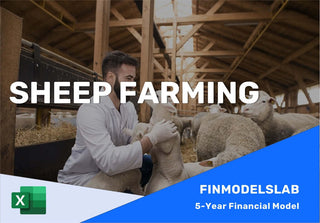
$169.00 $99.00 Get Template
Related Blogs
- Starting a Business
- KPI Metrics
- Running Expenses
- Startup Costs
- Pitch Deck Example
- Increasing Profitability
- Sales Strategy
- Rising Capital
- Valuing a Business
- How Much Makes
- Sell a Business
- Business Idea
- How To Avoid Mistakes
Leave a comment
Your email address will not be published. Required fields are marked *
Please note, comments must be approved before they are published

- Farm Insurance
- Privacy Policy
- Animal Farm
- Farm Equipment
- Farm Education
- Gardening Tips
Sheep Farming Success: Your Foolproof Business Plan!
Table of Contents
A well-crafted sheep farming business plan is crucial for success in this industry. It outlines your goals, strategies, and financial projections, helping you navigate challenges and exploit opportunities. This metadescription highlights the importance of having a comprehensive business plan for starting or expanding a sheep farming venture.
A successful sheep farming business requires careful planning and strategic implementation. With the increasing demand for high-quality wool and meat products, now is an opportune time to enter the sheep farming industry. Whether you are a seasoned farmer looking to diversify your operations or a beginner with a passion for livestock, this comprehensive business plan will guide you through the process of establishing and managing a profitable sheep farm. From selecting the right breed of sheep to designing efficient infrastructure, we will provide you with the essential knowledge and insights to thrive in this competitive market.
Introduction
Welcome to our comprehensive guide on sheep farming business planning. If you have a passion for animals and are considering starting your own agricultural venture, sheep farming can be a profitable and rewarding option. This article will provide you with valuable insights into developing a solid business plan for your sheep farming enterprise.
Market Analysis
Understanding the sheep market.
Before diving into the sheep farming business, it is crucial to conduct a thorough market analysis. Evaluate the demand for sheep and sheep products in your target market. Identify potential competitors, their pricing strategies, and market share. This analysis will help you understand your competitive advantage and tailor your business plan accordingly.
Farm Infrastructure
Setting up your farm.
Creating suitable infrastructure is essential for successful sheep farming. Determine the size of the farm you require based on the number of sheep you plan to raise. Construct secure fencing, housing facilities, and water supply systems. Adequate pasture management is also crucial to ensure your flock’s health and productivity.
Breeding and Selection
Choosing the right breeds.
In the sheep farming business, selecting the appropriate breed is vital. Consider factors such as local climate, market demand, and your farming objectives. Different breeds have varying characteristics and adaptability, so choose wisely to maximize your profitability.
Feed and Nutrition
Developing a feeding plan.
Sheep require a balanced diet to maintain good health and productivity. Create a feeding plan that includes a combination of pasture grazing and supplementary feed. Consult a livestock nutritionist to ensure your flock’s nutritional needs are met and to optimize their growth and reproduction rates.
Healthcare and Disease Prevention
Implementing a veterinary care program.
Sheep farming involves protecting your flock from various diseases and parasites. Develop a healthcare plan in consultation with a veterinarian to ensure regular vaccinations, deworming, and routine check-ups. Implement biosecurity measures and maintain proper hygiene to minimize the risk of contagious diseases.
Marketing and Sales
Promoting your sheep products.
To succeed in the sheep farming business, you need to effectively market your products. Develop a marketing strategy that highlights the unique qualities of your sheep and their products. Utilize online platforms, local markets, and direct sales channels to reach potential customers. Establish relationships with local restaurants, butcher shops, and wool buyers to expand your market reach.
Financial Planning
Estimating costs and revenue.
A solid financial plan is crucial to ensure the profitability of your sheep farming business. Determine your initial investment costs for land, infrastructure, and livestock purchase. Estimate ongoing expenses for feed, healthcare, and marketing. Project your revenue based on market prices and expected flock growth. Regularly review and adjust your financial plan to stay on track.
Risk Management
Mitigating potential risks.
Identifying and managing risks is an integral part of any business plan. Analyze potential threats such as extreme weather, disease outbreaks, or market fluctuations. Develop contingency plans to minimize the impact of these risks on your sheep farming operations. Consider investing in insurance coverage to protect your assets and mitigate financial losses.

Continual Learning and Adaptation
Staying informed and innovative.
The world of agriculture is ever-evolving, so it is important to stay updated with the latest trends and advancements in sheep farming. Attend workshops, conferences, and join relevant industry associations to enhance your knowledge and expand your network. Continually evaluate and adapt your business plan to remain competitive and seize new opportunities that arise in the market.
Developing a well-thought-out business plan is the foundation for a successful sheep farming venture. By conducting market analysis, investing in proper infrastructure, implementing effective breeding and feeding practices, prioritizing healthcare, and developing a strong marketing strategy, you can maximize your chances of profitability and sustainable growth in the sheep farming industry.
Executive Summary:
The purpose of this sheep farming business plan is to establish a sustainable and profitable venture that meets the growing market demand for sheep products, including meat, wool, and milk. Our key objectives are to provide high-quality products while adhering to sustainable farming practices. We aim to achieve this through strategic breeding programs, efficient farm infrastructure, effective marketing and sales strategies, and comprehensive financial projections that demonstrate the profitability and sustainability of our business model.
Market Analysis:
In conducting a thorough analysis of the sheep farming market, we have identified several key factors that will influence our business. Demographically, there is a growing consumer preference for locally-sourced and sustainable products, creating an opportunity for us to meet this demand. However, we also face challenges such as potential disease outbreaks and environmental regulations that may impact our operations. By implementing strict biosecurity measures and staying updated on regulatory requirements, we can mitigate these risks and ensure the long-term success of our business.
Farm Infrastructure and Equipment:
Our sheep farming operation requires suitable grazing land, well-designed housing structures, secure fencing, efficient feeding systems, and modern shearing facilities. These infrastructure and equipment investments are essential for the health and productivity of our flock. We have carefully budgeted for their acquisition and ongoing maintenance, aligning costs with our production goals to ensure optimal efficiency and profitability.
Breeding and Stock Management:
Our breeding program focuses on selecting sheep with desirable traits that align with market demands. We prioritize health, productivity, and the ability to thrive in our specific environment. Regular vaccination protocols, parasite control measures, and comprehensive veterinary care will be implemented to ensure the well-being and optimal productivity of our stock. By maintaining a healthy and genetically diverse flock, we can maximize profitability and meet the varying needs of our customers.
Marketing and Sales Strategy:
To create awareness and demand for our sheep products, we will implement a comprehensive marketing strategy. This includes branding initiatives, effective product positioning, and promotional activities targeting our identified target markets. We will also explore collaborations with local restaurants, retailers, and fiber mills to expand our reach. Pricing strategies will be developed to ensure competitiveness while maintaining profitability, and we anticipate steady growth in sales volumes as we establish ourselves in the market.
Operational Plan:
Our operational plan outlines the day-to-day activities involved in sheep farming, including feeding routines, shearing schedules, lambing management, and farm labor requirements. We have identified potential risks and challenges associated with managing livestock, such as disease outbreaks or adverse weather conditions. To mitigate these risks, we have developed contingency plans and will regularly review and update our practices to ensure the health and welfare of our flock.
Financial Projections:
Comprehensive financial projections have been developed to demonstrate the viability and profitability of our sheep farming business. This includes startup costs, operational expenses, revenue forecasts, and cash flow analysis. We have also considered long-term goals, such as expansion plans or diversification into value-added sheep products. These projections indicate a positive return on investment and sustainable growth over time.
Risk Management:
Identifying potential risks specific to sheep farming, we will implement robust risk management strategies. Biosecurity measures will be put in place to prevent disease outbreaks, and we will closely monitor market fluctuations to hedge against any negative impacts. Diversifying revenue streams and conducting regular health checks for our flock will also contribute to reducing both reputational and operational risks. Our commitment to animal welfare and sustainable farming practices further mitigates risks and aligns with consumer expectations.
Sheep Farming Business Plan
Introduction:
- Sheep farming is a lucrative and sustainable business venture that involves rearing sheep for various purposes, such as meat production, wool production, and even dairy products.
- This business plan aims to outline the key components and strategies required to establish and run a successful sheep farming enterprise.
Objectives:
- To establish a highly productive and profitable sheep farm by utilizing modern farming techniques and management practices.
- To meet the growing demand for quality sheep-related products in the market.
- To provide employment opportunities and contribute to the local economy.
- To promote sustainable agriculture practices and animal welfare.
- The sheep farming industry has experienced steady growth due to increased consumer demand for organic and ethically sourced food products.
- There is a growing market for lamb meat, wool, and dairy products derived from sheep.
- Identify target markets, including local consumers, restaurants, hotels, and textile industries, to ensure a consistent demand for your products.
- Conduct market research to assess competition, pricing strategies, and consumer preferences.
Farm Management:
- Acquire suitable land for the sheep farm, ensuring ample grazing space and proper fencing to prevent predators.
- Develop a comprehensive breeding program to improve the genetic quality of the flock and maximize productivity.
- Implement a feeding regime that meets the nutritional requirements of the sheep, taking into account their age, weight, and stage of production.
- Ensure proper healthcare and vaccination protocols to prevent diseases and maintain a healthy flock.
- Hire skilled and knowledgeable staff who are experienced in sheep farming practices.
Financial Planning:
- Create a detailed budget outlining the initial investment required for land, infrastructure, sheep acquisition, and equipment.
- Estimate ongoing operational costs, including feed, veterinary care, labor, and marketing expenses.
- Develop a sales forecast based on market demand and pricing strategies.
- Explore financing options, such as loans or grants, to support the establishment and growth of the sheep farm.
- Regularly monitor and analyze financial performance to identify areas for improvement and ensure profitability.
Marketing and Promotion:
- Create a strong brand identity for your sheep farm, highlighting the quality and ethical practices associated with your products.
- Utilize both traditional and digital marketing channels to reach your target audience, including social media platforms, local newspapers, and agricultural trade shows.
- Offer attractive packaging and labeling for your products to enhance their market appeal.
- Establish partnerships with local retailers, restaurants, and hotels to secure consistent sales outlets.
- Regularly engage with customers and seek feedback to improve your products and services.
Conclusion:
A well-planned and executed sheep farming business can be a profitable venture, meeting the increasing demand for sheep-related products while contributing to sustainable agriculture and economic growth. By adopting modern farming techniques, implementing effective management practices, and focusing on marketing strategies, this business plan aims to guide aspiring sheep farmers towards success.
Thank you for taking the time to visit our blog and learn about sheep farming business plans. We hope that the information provided has been valuable to you and has given you a clearer understanding of what it takes to start and run a successful sheep farming business. Before we conclude, let’s recap some key points that we have discussed throughout this article.
First and foremost, developing a comprehensive business plan is essential for any aspiring sheep farmer. Your business plan should outline your goals, objectives, and strategies for achieving success. It should also include detailed financial projections, market analysis, and a thorough assessment of the resources and infrastructure needed to support your operation. By creating a well-thought-out business plan, you will be better equipped to make informed decisions and secure financing from potential investors or lenders.
In addition to a solid business plan, it is crucial to have a deep understanding of the sheep farming industry. This includes knowledge of sheep breeds, nutrition and health management, breeding and reproduction, as well as marketing and sales strategies. Building relationships with experienced sheep farmers and industry professionals can be immensely beneficial, as they can provide guidance, mentorship, and valuable insights into the business.
Lastly, it is important to approach sheep farming with a long-term perspective. Like any agricultural endeavor, success in sheep farming does not happen overnight. It requires dedication, hard work, and patience. Building a reputable flock and establishing a strong customer base takes time and effort. However, with the right planning, management, and continuous learning, you can create a sustainable and profitable sheep farming business that provides a livelihood for you and your family.
In conclusion, starting a sheep farming business can be a rewarding venture for those who are passionate about agriculture and animal husbandry. By developing a comprehensive business plan, acquiring the necessary knowledge and skills, and maintaining a long-term perspective, you can set yourself up for success in the sheep farming industry. We hope that this article has inspired and informed you on your journey towards becoming a successful sheep farmer. Thank you once again for visiting our blog, and we wish you the best of luck in your future endeavors.
Here are some commonly asked questions about Sheep Farming Business Plan:
1. How do I create a business plan for a sheep farming venture?
Creating a business plan for a sheep farming venture involves several key steps:
- Conduct thorough market research to understand the demand for sheep products in your area.
- Define your target market and identify potential customers.
- Outline your business goals, objectives, and strategies.
- Determine the size of your flock and the type of sheep you plan to raise.
- Calculate your startup costs, including land, infrastructure, equipment, and livestock expenses.
- Develop a marketing and sales plan to promote your sheep products.
- Create a financial plan that includes projected income, expenses, and profitability.
- Consider seeking professional advice or assistance to ensure your business plan is comprehensive and well-structured.
2. What are the key considerations when starting a sheep farming business?
When starting a sheep farming business, it’s important to consider the following:
- Choose a suitable location with adequate grazing land and access to water sources.
- Select the right breed of sheep based on your target market and climate conditions.
- Ensure proper housing and shelter for your flock, including secure fencing.
- Develop a feeding and nutrition plan to meet the specific dietary requirements of your sheep.
- Implement a health management program, including vaccinations and regular veterinary care.
- Create a breeding plan to optimize flock productivity and genetic traits.
- Establish effective record-keeping systems to track flock performance and financials.
- Develop a contingency plan to handle unforeseen challenges, such as disease outbreaks or market fluctuations.
3. How can I secure funding for my sheep farming business?
Securing funding for a sheep farming business can be done through various avenues:
- Apply for agricultural loans or grants offered by government agencies or financial institutions.
- Seek investors or partners who are interested in supporting your venture.
- Consider crowdfunding platforms, where individuals can contribute financially to your business idea.
- Explore agricultural programs or initiatives that provide financial support to new farmers.
- Prepare a comprehensive business plan and financial projections to demonstrate the viability and profitability of your sheep farming business.
4. What are the potential challenges in the sheep farming industry?
The sheep farming industry can pose several challenges, including:
- Changing market demand and price fluctuations for sheep products.
- Seasonal variations in feed availability and quality.
- Disease outbreaks or health issues within the flock.
- Predator attacks, especially in areas with a higher predator population.
- Labor-intensive tasks, such as lambing and shearing.
- Weather conditions impacting grazing land productivity.
- Competition from other livestock producers and alternative protein sources.
By being aware of these challenges and implementing appropriate strategies, you can mitigate risks and increase the chances of success in your sheep farming business.
Recommended For You

Feather Your Future: Launching a Thriving Chicken Farm Business

Mooving in the Right Direction: Crafting a Winning Cattle Farm Business Plan

Berry Bliss: Kickstarting Your Flourishing Berry Farm Business!

Bee-lieve in Success: Launch Your Buzz-worthy Bee Farm Business

Planting Success: Crafting a Stellar Farm Start Up Plan

Power Up Profits: Launch Your Solar Farm Business & Shine
Leave a reply cancel reply.
Your email address will not be published. Required fields are marked *
Save my name, email, and website in this browser for the next time I comment.
JavaScript seems to be disabled in your browser. For the best experience on our site, be sure to turn on Javascript in your browser.
Business Management
If you’re thinking about raising sheep commercially, there are many different factors to consider. Use Penn State Extension’s vast collection of resources to help make your farm a profitable one. Topics covered include an introduction to livestock production, using flock records to set goals and make selection decisions, farm biosecurity, pricing meat, marketing your products, and farm finances.
Raising Sheep for Profit
Raising sheep for profit is possible on both small acreage-farms and much larger enterprises. Profitability can be challenging, but with productive sheep and close control of expenses, it is possible to make your operation efficient. Successful marketing of sheep products is also critical for a profitable sheep operation.
Sheep producers have to face another challenge. The average consumption of lamb is declining and people consume it mostly during the spring holidays rather than all year. Producers can do a lot to increase the popularity of lamb. They can market it for various ethnic holidays or there may be existing markets to take advantage of.
Timing is another important factor. The price of lamb is often higher in the spring. Knowing what prices to charge for your meat cuts is dependent on the cost of production. The cost of raising an animal includes the cost of the initial purchase through until the day of slaughter.
Sheep Farm Business and Management
If you want your sheep raising operation to be a successful one, there are several factors to bear in mind. These include safe operation and facilities, nutrition and manure management plans, and risk management. Flock records can be used to set goals and make selection decisions. You should also have a strategy and budget for selecting your next ram . Being prepared for an emergency plays a critical role in a sheep raising business.
Another important aspect to consider is how you’re going to finance your sheep farm . There are many ways to finance your new enterprise, but you will need a written business plan to show the funders how you plan to use funds and make repayments. You can use budgeting to help guide you in making the best financial decisions.
Penn State Extension’s Custom Agricultural Business: A Guide to Get You Started is for farm owners, operators, and producers who want to know more about running a successful livestock business.
- Product Name
- Date Posted

Pennsylvania Nutrient Management Program

Do Your Sheep and Goats Have ID Tags?

Sheep Management and Production

Spring Lamb Production

So You Want to Raise Sheep or Goats?

Why Aren't All Meat Processors the Same in Pennsylvania?

Exploring Two Ways to Direct Market in Pennsylvania

Do You Have a Plan for Marketing Your Lambs?

Sheep Records: The Key to Profitability

Review Your Sheep Records

Use Flock Records to Set Goals and Make Selection Decisions

How to Shear Sheep

How Much Should You Charge? Pricing Your Meat Cuts

Off-Season and Accelerated Lamb Production

Milking Sheep Production

Integrating Grazing into Cropping Systems: Infrastructure

Body Condition: One More Evaluation Tool

Building an Emergency Response Plan for Livestock Producers

Have You Reviewed Your Sheep Records Lately?

What if Lambs Were Priced on a Grid?

What You Should Know About Buying Livestock

Sheep Management and Production: Instructor Guided

Sheep Grazing to Maintain Solar Energy Sites in Pennsylvania

Marketing Lamb and Goat for Holidays
You may also be interested in..., personalize your experience with penn state extension and stay informed of the latest in agriculture..

- Business Plans
- Business Ideas
- Business News
- Business Tips
- Testimonials
- Terms And Conditions
- REFUND POLICY
- DELIVERY POLICY
- PRIVACY POLICY
- WHATSAPP SUBSCRIPTION
Select Page
Starting Sheep Farming Business in South Africa – Business Plan (PDF, Word & Excel)
Posted by BizBolts | Agriculture , All Articles , Business Ideas , Business Plans , Livestock Farming

There has been an increase in the demand for all types of meat, including mutton, in South Africa over the years. This is because mutton is a rich source of high-quality protein, and it is also an outstanding source of many vitamins and minerals. Sheep farming is a very profitable business to start in South Africa. The two primary products for sheep farming are sheep meat (lamb & mutton) and wool. The demand for lamb and mutton in South Africa is high, exceeding 200 000 tonnes per year. There is a large export market for South African sheep wool, as over 55 million KG of wool is exported from South Africa every year. This goes to show that a sheep farming business is lucrative to start in South Africa. This article will outline how to start a mutton & wool sheep farming business in South Africa, and the sheep farming business plan – PDF, Word and Excel.
Before you start a mutton & wool sheep farming business in South Africa, there are some important decisions which you have to make. You have to decide on the size of your sheep production business ie how many sheep you will have at your sheep farm. There are many different sheep breeds, so you have to select which sheep breed you will use, location of your business, and your target market. The size of your mutton & wool sheep farming business will depend on the amount of capital you have, and your target market. It’s important that you get a good sheep production business plan before you start commercial sheep farming in South Africa.
NB: This article and business plan is about sheep for both meat & wool production. We also have an article and business plan for only meat production: Mutton Sheep Farming Business in South Africa .
Business Model
In order to successfully set up a sheep farming business, you need to select a healthy, high yield breed of sheep. You can buy the breeding stock and raise the flock for wool and mutton. There are different types of breeds to choose from. Some of the best breeds in South Africa for meat are Dorper sheep, Black-headed Persian sheep, and Meatmaster sheep, to name a few. Consider sheep that can be used for both wool and meat, such as German Merino and Suffolk sheep. When rearing your animals, there are three main methods that you can consider, which are intensive, semi-intensive, and extensive sheep farming. Intensive farming of sheep involves keeping your sheep in an enclosed area, also known as “stall fed” sheep farming. Feed, fodder, and water are brought to the sheep. When it comes to semi-intensive sheep rearing, the sheep can graze on their own, but they are given concentrates for nutrients. With extensive farming, sheep graze on their own and can only sleep in the shed. No extra feed is given to the flock. For commercial sheep farming, feed management is critical. In addition to green fodder, you must supplement the feed with nutrient concentrate.
Market Research
Gathering information about your potential consumers is important. As a livestock farmer, you need to gather information about what your consumers’ needs and preferences are. For any business owner, there may be many opportunities that you can tap into. It is critical to conduct market research in order to gain an informed view of what to expect when venturing into agricultural businesses for your sheep farming business to grow. Market research is a key aspect that business owners must undertake long before setting up an actual business. You can gain a lot of useful information and guidelines that will help sustain your farming venture. Researching the meat and wool markets will inform you about where and whom you should target when selling your products. It also allows you to understand your consumer better. Market research further helps you determine how much to charge for both wool and mutton as well as how much of the product you must provide. With market research, you can develop a production plan that can ensure your customers’ demands and needs are satisfied. Ensure that you do thorough market research when setting up your sheep farming business because it can determine whether or not your business will be sustainable or not.
Land For Sheep Farming
The choice of land for doing your sheep farming business should not be trivialized. Make sure that the land is not susceptible to water logging. An area that is generally on a raised terrain is ideal. There are also factors to consider that end up determining your choice of land location. For instance, proximity to essential amenities such as veterinary services and market is vital. That would imply that a strategic well serviced road network close by is a must. Not forgetting that there must be a clean and reliable water supply. The land must have sufficient pastures for the sheep to graze. And it should obviously be large enough to accommodate the number of sheep you want to breed.
Housing And Equipment
Two important things to ensure for the sheep housing are ventilation and adequate space (horizontally and vertically). How you will be doing your sheep farming determines the housing and equipment aspect. Sheep can be reared completely indoors or partially outdoors. For the former, there will be a need to have comprehensive housing built. If they get to be partially outdoors then housing might probably be for from when the day ends till the next morning.
Generally, the height of the roof level from the floor should on average be 1.8 metres. The space that should be available for one fully grown sheep should range from approximately 1-1.5 square metres. Basically, bricks, cement, roofing sheets, wooden logs, and fencing form the basis of what is needed for housing. Barns and sheds can nalso be used as sheep housing. Ideally it is recommended to fence even if you feel the housing is secure – it augments physical security. Fencing is also essential for the pasture. The required equipment for mutton & wool sheep farming includes drinking and feeding equipment. Your commercial sheep farming business plan should include the costs of purchasing equipment and sheep housing.
Sheep Breeding Stock
Choosing your breeding stock is majorly premised on the end products of your sheep farming business. Breeding stock that is best for meat production might not necessarily be best also for wool production. There are 3 broad classes of breeding stock in general. These are exotic, indigenous and cross breeds. By breeding stock we are referring to the sheep that mate to bring about the offspring lambs. The over-arching consideration to make is whether or not a particular breed can thrive in your local climate.
Sheep breeding stock is composed of ewes (female sheep) and rams (male sheep). The rams and ewes will mate to produce lambs which you will then feed and raise. It is highly advised that you get your breeding stock from reputable suppliers. When choosing breeding stock you must also carefully examine them before buying. That is meant to ensure they are in good health – buying from suppliers that have detailed health records would be the best. Most sheep farmers in South Africa prefer dual purpose sheep breeds. These are sheep breeds which are used for both meat and wool production. Examples of sheep breeds used in South Africa for meat and wool production include the Merino, Dohne Merino, South African Mutton Merino, Afrino Sheep and the Dormer. The most popular sheep breed in South Africa is the Merino breed, and breeds derived from the Merino. The mutton & wool sheep farming business plan should include the costs of purchasing the breeding stock.
Sheep Feed And Nutrition
There are two broad feeding approaches in a sheep farming business. The first one entails sheep feeding from pasture land since sheep are grazers. Pasture is the primary source of feed for sheep, and it’s also the one which is economically viable business wise. However when doing commercial sheep farming in South Africa, you will also need to give supplementary feed to the sheep. This ensures that the sheep get all the required nutrients for growth. Pasture might also not be adequately available throughout the year due to changing seasons. The supplementary feed to give to the sheep include grains, hay, commercial sheep feed, salts and minerals. Some of the common grains are sorghum, wheat and maize. Over and above all, ensure that the sheep have access to fresh, clean and reliable water for drinking. The feeding costs should be included in your mutton and wool sheep farming business plan.
Management and Labour
The number of employees needed for your mutton & wool sheep farming business will depend on the size of your sheep farm. At the minimum, you need sheep attendants who will keep the sheep. Their duties include f eeding the sheep, cleaning and disinfecting the building and equipment, monitoring the sheep health, shearing the sheep wool, herding the sheep, and other day to day duties. Dedicate finance and marketing team may also be needed depending on the size of your sheep farming business. Your mutton & wool sheep farming business plan should take into account the salaries and wages of your employees.
Sales And Marketing Strategies
Sales and marketing are important for the success of your sheep farming business. The livestock business in general is a bit different. With most meat products and livestock, prices tend to go down during the dry season. This is when feed and water are hard to find, and when drought threatens, a lot of animals may die. During these times, most farmers sell their livestock at the last minute, which forces prices down. As such, know the market trends and target certain markets. Consider selling your meat during festive seasons, religious holidays, and when many families traditionally slaughter a sheep or goat. Don’t wait too long when your products are ready, and watch the weather and market trends in order for you to sell when the price is high. Sell your sheep when they are strong and healthy to fetch a good price. Consider also getting a price guarantee. You can agree with a buyer to supply a certain amount of sheep, kg’s of meat, or wool of a particular age or type on a regular basis and at a guaranteed price. You can do that with supermarkets, abattoirs, mills, and textile companies.
Market for Sheep Meat and Wool in South Africa

Sheep Meat in a Supermarket in South Africa
The major products from a sheep farming business are sheep meat and wool. Sheep meat has 2 categories: lamb and mutton. Lamb is sheep meat from a sheep less than 1 year old, while mutton is from a sheep greater than 1 years old. There is high demand of lamb & mutton in South Africa, exceeding 200 000 tonnes per year. You can supply your sheep to abattoirs , hotels, restaurants, retailers, butcheries, meat processors and individuals. Most of the sheep wool produced in South Africa is exported. The sheep wool is sold locally in South Africa via auctions and then exported. South African Wool is exported to China, the Czech Republic, Italy, India, Bulgaria, Germany, and the United States.
Advantages of Sheep Farming Business
Sheep are relatively affordable and manageable compared to other livestock. These animals do not need expensive structures to house them, plus they require less labor than other kinds of livestock. The starting stock is relatively cheap, and the flock multiplies rapidly. These animals are economical converters of grass into meat and wool. They eat more varied kinds of plants compared to goats or cows, and this makes the animals excellent weed destroyers. Unlike goats, sheep do not damage any trees. You can take advantage of three different sources of income when rearing sheep; the sale of wool, meat, and manure. There is no need to throw away grains lost at harvest time; your sheep can easily convert the waste into profitable products.
Keys to Profitability
Set up a new market for your mutton and wool. If there is no market nearby, get other farmers to work with you and build one. Find a suitable location and design the market in close consultation with other herders, traders, and farmers. Ensure that your market has a shade structure, a fence, loading ramps, feeding and watering facilities, restrooms, and offices. Another tip to increase your profit is to partner with textile companies, abattoirs, butcheries, and supermarkets. Also ensure that you are mobile. Invest in a cold truck so that you able to transport your meat even over long distances. Lastly, learn what buyers want and find out what your consumer’s needs are and meet them.
PRE-WRITTEN SHEEP FARMING BUSINESS PLAN (PDF, WORD AND EXCEL): COMPREHENSIVE VERSION, SHORT FUNDING/BANK LOAN VERSION AND AUTOMATED FINANCIAL STATEMENTS
For an in-depth analysis of the mutton & wool sheep farming business in South Africa, purchase our sheep farming business plan. We decided to introduce the business plans after noting that many South Africans were venturing into the mutton and wool sheep production business without a full understanding of the industry, market, how to run the business, the risks involved, profitability of the business and the costs involved, leading to a high failure rate of their businesses.
Our business plan will make it easier for you to launch and run a mutton & wool sheep production business successfully, fully knowing what you are going into, and what’s needed to succeed in the business. It will be easier to plan and budget as the mutton & wool sheep production business plan will lay out all the costs involved in setting up and running the sheep farming business. The business plan is designed specifically for the South African market.
USES OF THE MUTTON & WOOL SHEEP PRODUCTION BUSINESS PLAN (PDF, WORD AND EXCEL)
The mutton and wool sheep production business plan can be used for many purposes including:
- Raising capital from investors/friends/relatives
- Applying for a bank loan
- Start-up guide to launch your meat & wool sheep farming business
- As a mutton & wool sheep farming project proposal
- Assessing profitability of the mutton & wool sheep farming business in South Africa
- Finding a business partner
- Assessing the initial start-up costs so that you know how much to save
- Manual for current business owners to help in business and strategy formulation
CONTENTS OF THE COMMERCIAL MUTTON & WOOL SHEEP FARMING BUSINESS PLAN (PDF, WORD AND EXCEL)
The business plan includes, but not limited to:
- Market Analysis
- Industry Analysis
- 5 Year Automated Financial Statements [ Income statements, cash flow statements, balance sheets, monthly cash flow projections (3 years monthly cash flow projections, the remaining two years annually),break even analysis, payback period analysis, start-up costs, financial graphs, revenue and expenses, Bank Loan Amortisation]
- Marketing Strategy
- Risk Analysis
- SWOT & PEST Analysis
- Operational Requirements
- Sheep farming guide (Technical Details of how to breed, feed and raise the sheep)
- Operational Strategy
- Why some South Africans in the meat & wool sheep production business fail, so that you can avoid their mistakes
- Ways to raise capital to start your meat & wool sheep farming business in South Africa
- Directory [Contact Details for South African suppliers of feeds, equipment, breeding stock, contacts of sheep farming training companies in South Africa, contacts of sheep farming organisations in South Africa]
The Mutton & Wool Sheep Farming Business Plan package consist of 4 files
- Sheep Farming Business Plan – PDF file (Comprehensive – 109 pages)
- Sheep Farming Business Plan – Editable Word File (Comprehensive – 109 pages)
- Sheep Farming Business Plan Funding Version – Editable Word File (Short version for applying for a loan – 44 pages)
- Sheep Farming Business Plan Automated Financial Statements – (Editable Excel file)
Testimonial 5
The BizBolts poultry business plan led us down the path from start to finish. Contact details of suppliers of key requirements were included in the business plan. It helped us crystallize our strategy, and the business plan was well received by the bank.
Testimonial 4
The business plan was very helpful, you did a great job of taking ideas and putting them into words as well as pointing out other aspects of the business plan I wouldn’t have thought of. I got funding using your business plan and it’s now 4 months since I started my poultry business, and everything is going well.
Testimonial 6
It is with excitement and pleasure to inform you that I have been successful in securing a loan from my bank. This would not have been possible if not for the BizBolts Business Plan. Thank you for your help, my dreams are now coming true.
Testimonial 3
The business plan has a highly professional look and feel. The research really helps me look deep into the market that I am targeting, it’s well suited for the South African market. The business plan clearly outlined everything I need to start the business and the costs. It’s now easier to budget and plan. Thank you very much.
Testimonial 7
Thank you BizBolts for the business plan. I received the business plan immediately after payment, it was money well spent ! I was able to easily edit the business plan. After using the BizBolts business plan, I can wholeheartedly recommend their products and skills.
Testimonial 2
I am extremely pleased with the business plan and financial statements. The business plan is very detailed & it meets my requirements. I feel better equipped with tools that can help me secure funding. I would have no hesitation of recommending your business plans to other people.
Testimonial 1
Many thanks to the BizBolts team for putting together a fantastic business plan, I could not have done this business plan on my own. I managed to get funding from investors to start my butchery business using your business plan.
GET THE SHEEP FARMING BUSINESS PLAN (PDF, WORD AND EXCEL) - R500 Only.
We decided to make the business plan affordable to anyone who would want to start the business, and the price for the pre-written business plan is only 500 Rand.
We have several payment methods which you can use.
Payment Method 1 (Visa card, Mastercard, Credit card, Debit Card)
Click Buy Now below to purchase. After you have purchased, you will instantly see the download link for the business plan package on the screen. We will also email you the download link. Get instant access to the business plan now!

If you want to purchase multiple business plans at once using Visa Card/MasterCard then click here: Business Plans Store
The business plan package is a zipped compressed file containing the PDF, Word and Excel documents. To open the package after downloading it, just right click, and select Extract All. If you have any problems in downloading and opening the files, email us on [email protected] and we will assist you.
Payment Method 2 (Instant EFT - FNB, Absa, Standard Bank, Nedbank, CapitecBank, Investec, TymeBank and African Bank. )

If you want to purchase multiple business plans at once using Instant EFT then click here: Business Plans Store
Other Payment Methods
- Cash deposit into our FNB Company Bank Account
- EFT Transfer to our FNB Company Bank Account
Call/Whatsapp us on +27606334830 for the other payment methods. (Whatsapp us by clicking the link https://wa.me/27606334830 ). Email: [email protected] .

About The Author

BizBolts (Pty) Ltd is a business research company based in Johannesburg, South Africa. We sell prewritten business plans for various industries including livestock production, crop farming and retail businesses. BizBolts also publishes articles on business ideas, business news, business tips, personal finance, and entrepreneur profiles.
Related Posts

Starting a Laundry Business in South Africa – Business Plan (PDF, Word & Excel)
December 21, 2022

Starting a Detergents Manufacturing Business in South Africa – Business Plan (PDF, Word & Excel)
October 29, 2023

Starting Trucking Business In South Africa – Business Plan (PDF, Word & Excel)
December 9, 2022

Starting Beef Cattle Fattening Farming Business in South Africa – Business Plan (PDF, Word & Excel)
December 14, 2022
Follow Us On Facebook

Subscribe To Our Newsletter
Join our mailing list to receive the latest news and updates from our team.
You have Successfully Subscribed!

Start Sheep Farming Business
- Pinterest 14
Learning more about how to start sheep farming business is important, especially if you want to start a new business. Sheep farming is actually rewarding, whether you raise for your livelihood, as a hobby or as a source of homegrown food supply.
And it can be a great way to convert grass into food and clothing. It is actually possible to raise sheep profitably on small piece of land if you can manage your operation carefully.
Sheep are generally kept for many different purposes such as meat, milk, skin and fiber.
Success in sheep farming business depends on good planning in advance, solid and continual management of the farm and also on keeping a record of everything.
Commercial sheep farming business can actually be a great source of income and employment.
Starting in a small scale and expanding gradually will be good. Sheep products (meat, fiber etc.) have a very good demand in the market, so you don’t have to worry about marketing.
And there is also an opportunity to export sheep products in the international market.
However, here we are describing more about ‘how to start sheep farming business’. Read below to learn more about the business.
Table of Contents
How to Start Sheep Farming Business
Staring commercial sheep farming business is relatively easy, as the sheep are smaller sized animals.
But it’s wise to make a better business plan prior to starting this business, and work according to the plan. Here we are describing more about starting sheep farming business.
Why Do You Want to Start Sheep Farming Business
First of all, decide the reasons actually why you want to raise sheep. Generally sheep are raised for many different reasons.
Some people raise sheep for earning a living from their meat, milk, hides and wool.
Some raise sheep for vegetation control, some raise for obtaining organic homegrown meat and also for other products.
A few people also raise sheep as a hobby or as a pet. So, it is very important to determine, why you actually want to raise sheep.
Do You Have Enough Time & Money for Raising Sheep
You also need to consider if you have enough time and money for starting sheep farming business.
You need money for purchasing sheep, building their shelter, fencing and also for vaccinations and vet checks. Consider whether you can arrange the money or not.
Select Farm Location
You will need to select a very good location for starting your sheep farming business and it’s very important.
You will need to select such an area that has all the facilities required for raising sheep .
Required facilities for raising sheep are a good and clean water source, availability of greens, good transportation, good marketing and vet service.
Consider all these facilities are available while selecting a good location for your farm.
Select & Purchase Breeds
There are numerous sheep breeds available throughout the world to choose from.
Some common and popular breeds for commercial sheep farming business are Cheviot , Suffolk , Polypay , Jacob , Hampshire , Katahdin , Merino , Ramboullet, Bannur, South Down etc.
Choose the breed depending on your production purpose. Starting with the local breeds will be better, especially if you are a beginner.

After selecting good and right breed for your operation, it’s time to purchase the animals.
Consider famous farms or breeders within your locality first for purchasing quality animals.
You can also purchase sheep from any of your nearest livestock market. Online classified websites are also a good option for sourcing quality animals.
Shelter/Housing
Good shelter/housing system is a must for raising sheep, although sheep don’t require high-end or expensive housing.
Your sheep will be healthy and live happily if you can fulfill their basic housing demands.
Sheep require shelter not only for keeping themselves safe from predators, but also for keeping themselves safe from adverse weather conditions.
An adult sheep will need between 10 and 20 square feet space depending on the breed and size of the animal.
You have to ensure that the house is always clean and dry, and the roof needs to be at least 6 feet high from the floor.
Good ventilation system is a must for keeping sheep, and you should ensure flow of sufficient air and light inside the house.
Feeding Your Sheep
Sheep are grazers and they love to graze. So, you have to ensure availability of good quality pasture for your animals.
The pasture for the sheep can include any mixture of brush, trees, grasses and legumes.
But in case if you have poor pasture, then you have to supplement their diet with hay and specialized pellet feed. Salt lick blocks are also required for the sheep.
You also need to ensure there is always fresh water available for your animals. Clean the feeding and watering pot of your sheep on a regular basis.
Fencing is a good option for keeping your animals inside, but it’s not a mandatory.
A good fence around the pasture will keep the sheep safe from predators or any other dangers. Both wire and woven fences will be good for your animals.
Health Care
Good health care and management not only keep the animals healthy and strong, but also helps to maximize income from the business.
Vaccinate your animals on a regular basis. You also need to ensure that the sheep are wormed regularly with a commercial worming paste that is suitable for sheep. Read: Caring for sheep .
Sheep are vulnerable to foot rot diseases. So, regular hoof trimming is required for the sheep.
Shearing is also important for raising sheep. Read: Sheep shearing information & guide .
Marketing sheep products is easy and there is already an established market for sheep products.
Consider marketing your products in your local markets first.
It will be better if you can set your marketing strategies before starting your sheep farming business.
You can make very good profit from your sheep farming business, if you follow modern systems/rules for raising sheep. God bless you!
Recommended for You

Balwen Welsh Mountain Sheep
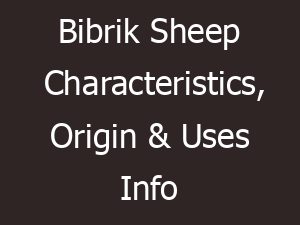
Bibrik Sheep
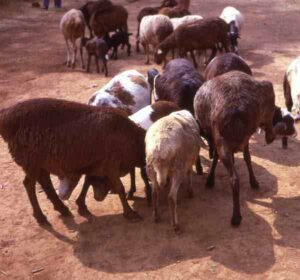
Red Maasai Sheep

Comeback Sheep

British Milk Sheep
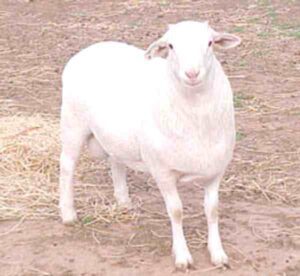
Royal White Sheep
2 thoughts on “start sheep farming business”.
good and helpful information on the sheep farming business.
If you start raising sheep they will deliver you a bundle of health and wellness advantages. I love these beautiful creature.
Leave a Comment Cancel Reply
Your email address will not be published. Required fields are marked *
Save my name, email, and website in this browser for the next time I comment.
- Agriculture Farming
- Livestock Farming
Project Reports
- Hydroponics
- Best Fertilizers
- Vertical Farming
- Sheep Farming
- Goat Farming
- Poultry Farming
- Fish Farming
- Pig Farming
- Dairy Farming
- Rabbit Farming
- Success Stories of Farmers
- Boost Fruit Yield
- District Wise Crop Production
- Schemes & Subsidies
- Agriculture Colleges
- Farm Insurance
- Disease Control And Management
Agriculture
Aquaculture
Horticulture
Agri Business
Zero Grazing Sheep Farming: How to Start, Business Plan for Beginners
Table of contents, benefits of zero grazing sheep farming, characteristics of stall fed or zero grazing system, intensive system-zero grazing system, construction of sheds for stall breeding under zero grazing system, shelter for sheep under zero grazing system, steps for dairy management under zero grazing, key activities of zero grazing system, feeding and nutrition under zero grazing system, supplementary feeding , limitations and challenges of zero grazing sheep farming , challenges .
The sheep in the extreme group were reared in a covered shed with 1m2 / animal floor space. Under the zero-grazing system, fodder and water were managed according to hygiene. Zero grazing is a system where hay is mown, and sheep are fed fresh daily. It allows the farms to use fresh grass and increase milk production from grass/forage where the farm does not have sheep grazing infrastructure. Especially at low milk prices, extra fresh grass feed can help reduce feed costs. Let’s find out more information about Zero grazing sheep farming.
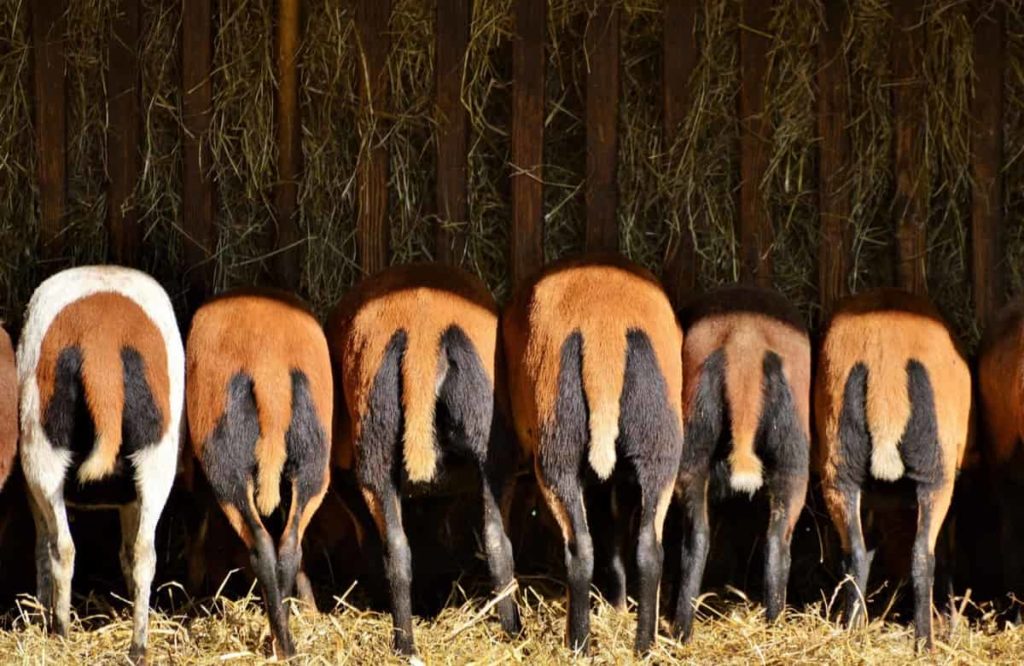
Zero grazing can also play a role when very wet fields are used for grazing, provided the used machines have wide enough wheels to distribute their load safely. Grassland management flexibility and skills are critical to a Zero grazing system; access coverage is essential. The sheep in the extreme group were reared in a covered shed with 1m2 / animal floor space. Under the Zero grazing system, fodder and water were managed according to hygiene. Adequate food and watering arrangements were made in this group.
The animals were moved to a night shelter in a shed covered with 1m2 / animal floor space in the extensive system. Too many sheep farmers have a zero grazing policy, monitoring every aspect of the sheep diet. There are about 30,000 well-bred sheep. The combination of the two is called semi-intensive. Semi-intensive care is mainly in the northern part of the country, and there are an estimated 40,000 sheep.
The Zero grazing farming system is becoming popular day by day. It is a new system with many advantages over traditional sheep farming. High profitability, rapid growth, low maintenance, etc., are some of the essential benefits of Zero grazing sheep farming system. Technological advances have boosted the sheep farming industry’s efficiency, especially for intensive farmers. Milk facilities have improved significantly in recent years, and computerized data recording has further contributed to market development and farm management. The benefits are;
- Increased use of grass
- Flexibility on wet farms possibly allows grass in the feed at the beginning of the season.
- Increased access to grass – such as fields where it is complex or far for sheep to walk.
- You can keep more sheep per unit area of land than the high efficiency of the animals compared to the continuous silage of hay throughout the season. It is obtained by growing high-yielding fodder crops such as Elephant Grass, Giant Setaria, Guatemala, and Lab.
- You can use fodder from areas not accessible for grazings, such as roadsides and steep slopes.
- Sheep are less affected by environmental hazards such as diseases and heat stress.
- Sheep save the energy usually lost in walking during grazing and convert it into more milk and meat production. Manure can be easily collected.
- Zero grazing is labor-intensive. The sheep should be taken to the fodder and watershed. However, you can save time because you don’t have to graze.
- Zero grazing would also help if you had the capital to buy fodder establishments, constructions, equipment, and standard sheep. You need to make sure there is enough feed because planning is key.
How this Farmer Made 5 Lakh Profit from Sheep Farming – A Success Story
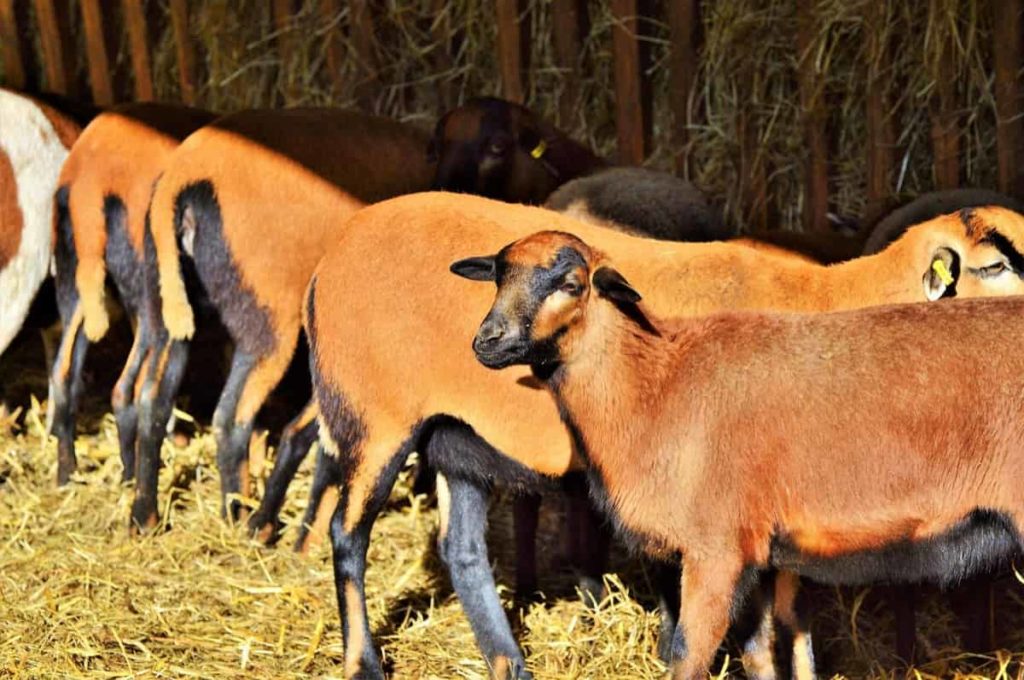
Other benefits of Zero grazing include grass-feeding, improved sheep production capacity, herd expansion, and flexibility with grazing systems. While many benefits have been reported, many challenges need to be addressed, particularly the economic feasibility of ZG.
It is a system where animals are raised in a safe area that is well cared for and fed on stalls with fodder, fodder, and concentrated feed grown inside the farm; Zero grazing sheep farming is more commendable for the following reasons.
- It is a system in which sheep are kept indoors with constant limited access and fed in stalls. It means a system where sheep are not left to fend for themselves with minimal care.
- Intensive operation of medium-sized herds of 50 to 250 heads or more focused on commercial milk production is especially good with this system of milking sheep.
- It is capable of exploiting the agro-industrial food system through fodder products.
- This system of management requires more labor and more cash. However, it has the advantage of being closely monitored and controlled by animals.
- In this method, dung is collected in one place and used as good fertilizer. As a result, less space is enough for more animals.
- Animal stress is very low.
- Animals are raised in a disease-free zone.
- Meat quality can be maintained.
- Animals are protected from heat.
- It is very easy to monitor and keep records of animals closely.
- Water is supplied through fencing and pipes except for zero greasing enclosures.
- It is a system in which sheep are kept indoors with limited access to land or otherwise, the so-called zero-grazing system of sheep production in which they are fed on stalls.
- It means a system where sheep are not left to fend for themselves with minimal care.
- Herds of 50 to 250 heads or more commercial milk production work well with this system, especially with lactating sheep.
- It can exploit the agro-industrial by-products as pangola grass (Digitaria Decumbens) with the capacity to carry 37 to 45 sheep per hectare.
- This system of management requires more effort and more cash. However, it has the advantage of close monitoring and control over the animals.
- In this method, dung is collected in one place and used as good fertilizer.
- Less space is enough for more animals.
Common Mistakes in Sheep Farming: For the First Time Sheep Owners
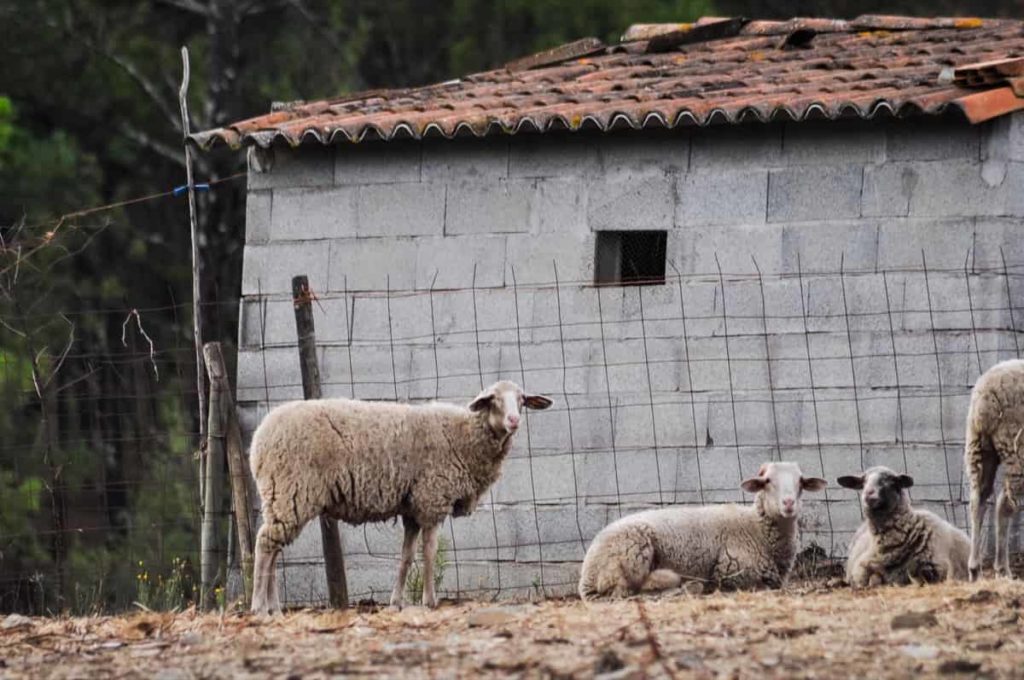
A typically designed shed consists of an enclosed area and an open area. The floor requirement is 10 square feet/ Animal in a covered area and 20 square feet/animal in an open area. The width of the shed should be north-south and the length east-west. East-west directions should be entirely enclosed by doors, while north-south directions should be open with mesh for proper cross ventilation. Animals are kept in batches/groups according to their age and condition.
The sheep prefer to live above the ground. But the sheep are happy to live on the earth. Therefore, a shed is needed to shelter the sheep during the rainy season and at night. Go for low-cost or organized high-cost sheds depending on your investment potential. Cross ventilation and light access are most important in sheep sheds.
An open paddock with a shed is essential. Sheep must be kept here for at least a few hours daily. Sheep are kept inside the shed only at night. Each adult sheep needs an area of 10 square feet. Sheds and paddocks should be covered with a high wire mesh fence to prevent sheep from jumping out. It is recommended to have trees around the farm to keep the environment cool.
Pregnant ewes, lambs, and rams are grouped based on age and body weight. Fodder and medicine must be provided in the required quantity and on time. For this purpose, wire mesh or wooden partitions are made. It is better to use soil for flooring as it absorbs urine and reduces the smell of ammonia. In addition, it is essential for overall good sheep health. You can also use burnt clay bricks to make a floor for easy maintenance, but a cement floor is not suitable. Sheep that regularly lie on the cement floor get injured in bed.
Distributing feed and fodder to a large herd is a difficult task. Feeders are helpful for this purpose, and they can be made of wood or metal sheets. One feeder for 15 to 20 sheep is required to avoid competition. GI sheet water troughs are provided for drinking water. Plastic-coated metal crates are still better. Clean feeders and water drain once a day. Motored and manual chaff cutters are other essentials.
Sheep Farming in the USA: How to Start, A Beginner’s Guide
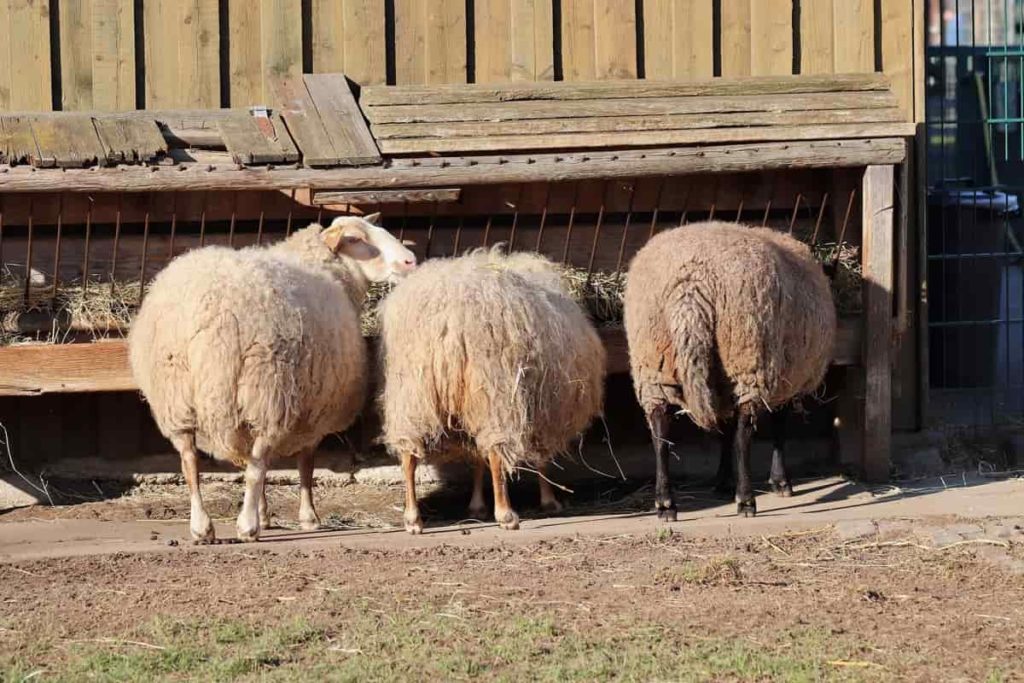
Establish fodder banks by growing Elephant Grass or Giant Setaria and supplement them with legumes-like lablab. Apply at least one acre of fodder per sheep. Create a Zero grazing unit with cubicles, a walking area, feed and water troughs, a roof, and a milking area.
Choose the right sheep with the resources available on the farm that is profitable in such situations. In this case, a Friesian is suitable. Give the sheep the right amount of food, for example, a mixture of grass and beans in 3 parts of grass and 1 part of beans. Concentrates such as supplementary feeds should be given to sheep producing more than 8 liters of milk.
Server breeds of sheep are available in India; some are raised on pastures and some on stall-feed. The stall-feed system is a new and upcoming concept called the ZERO GRAZING system of sheep farming in India. Some sheep breeds are suitable for cities and areas where grazing facilities are not available). It is recommended maintaining Sirohi, Jamunapari, and Barbari pure and cross-bred sheep stalls are suitable for the feed farming system.
Due to our tolerance to climate change, they usually are twice a year (8 months). They are profile breeders and usually give birth to twins and three kids in 12 to 15 months. The best meat is obtained from a 6-month-old sheep. Under normal circumstances, the average age of a sheep is about ten years, and it should be given about eight lactating milk, which is taken once a year. A sheep is at its height when it is 4-6 years old. When properly fed, deer can breed from 7 to 8 years.
- Control of diseases and parasites to reduce mortality and other economic losses
- Proper milking and milking hygiene
- Proper breeding methods such as artificial insemination
- Planning and decision making to assist Keep records of production, health, sales, and procurement.
- Ensure environmental protection for sustainable production
- Good sheep feeding and nutrition for alternative stock
Under stall feeding – Feeding sheep with zero grazing with the following method.
- Silage – 2 kg per day (morning – 1 kg / evening 1 kg)
- Lucerne or leguminous fodder – 500 gm / day / animal – once daily
- Concentrate feed – 200 gm / animal / day – daily – once daily
- Mineral mixture – 10 g / animal / day – once daily
Sheep Farm Insurance in India, Companies, Policy, and Premium
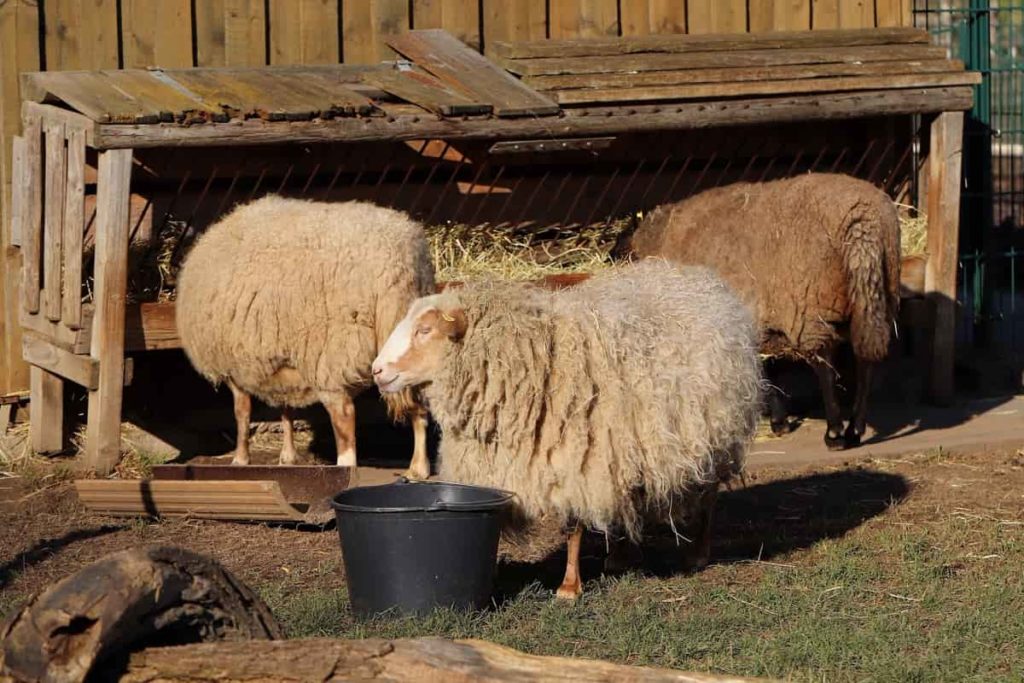
Flexible and grassland management – It is important to implement the zero-grazing system; it is important to provide fresh grass for sheep. Proper planning ahead and organizing are key. To keep the grass fresh, it is advisable to mow at least twice a day, ensuring minimal damage.
Quality – Good as conventional grazing grass. Pruning should be done slightly higher than the grazing cover. A cover of 3,200 – 3,500 kg DM/ha (dry matter per hectare) can ensure quality and production.
Monitoring quality – Maximum efficiency and regular monitoring of animal health are required. Grass quality can be measured by NIR analysis, highlighting any adjustments in the current ratio.
Location – Reiterating sheep signals and making sure the sheep has enough space promotes intake and performance. Monitor the level of waste to ensure maximum intake. Refused feeds should be removed daily (they will melt faster). Zero grazing units aim to get less than 5% waste.
Silage – Swards that have crossed the grazing cover should be cut from the rotation and used for silage.
Supplementary feeding should be viewed in a similar yield response as grazing. If the fresh grass is dry, the rate of silage replacement may be higher, so beware of more buffering and loss of feed. If fresh grass is mixed with silage buffer, the mixture can be tasteless, so the top dressing method is recommended. Make sure the minerals are balanced, especially magnesium.
- Some research has shown that zero-grazing farms have performed poorly from an environmental and economic point of view due to less efficient use of concentrated and by-products.
- Labor and machinery requirements can add to the cost.
- Infrastructure and sludge management for sheep if housing is increased.
Dairy Disease Symptoms and Treatment for Cows, Cattle, Goats, and Sheep
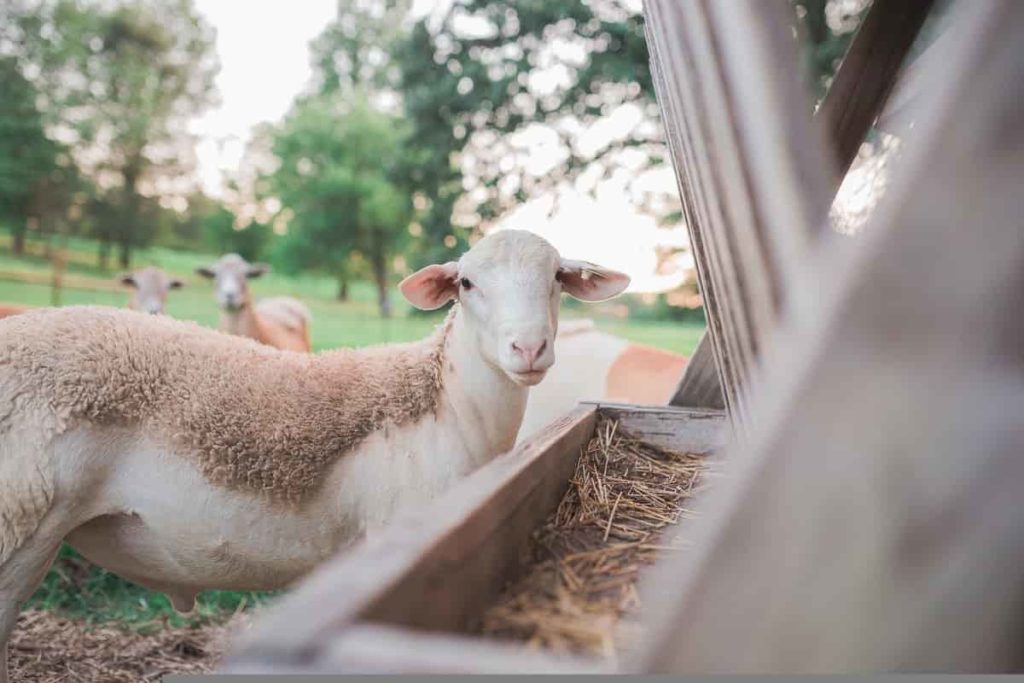
- High grazing costs, including investment in machinery, fuel, and wear and tear, or contractor charges for feeding the grass to sheep
- Daily changes in the amount of DM material and dry matter can affect animal performance
- The cut grass will spoil and should ideally be eaten within 12-18 hours.
- The increased cost of storing, handling, and spreading sludge compared to grazing systems
- Feed space requirements (2 ft/head) are large, and all animals should be able to access feed at a time.
- High demand for labor
Ultimate Guide to Natural Vegetable Farming
Natural farming for sustainable livestock management, dairy farm technology in india: the future of dairy husbandry, comprehensive guide to organic farming in villages, modern sheep farming technology: the future of sheep husbandry, goat farming technology: the future of goat husbandry.
- How to Build a Low-budget Goat Shed: Cheap Ideas and Tips
Goat Farming Training Programs in India: A Beginner’s Guide
Types of pesticides used in agriculture: a beginner’s guide, economical aquaculture: a guide to low-budget fish farming, 15 common planting errors that can doom your fruit trees, how to make houseplants bushy: effective tips and ideas, innovative strategies for boosting coconut pollination and yield, pollination strategies for maximum pumpkin yield, the complete guide to chicken fattening: strategies for maximum growth.
- Natural Solutions for Tulip Problems: 100% Effective Remedies for Leaf and Bulb-Related Issues
Revolutionizing Citrus Preservation: Towards a Healthier, Greener Future
- Natural Solutions for Peony Leaf and Flower Problems: 100% Effective Remedies
- Maximizing Profits with Avocado Contract Farming in India: A Comprehensive Guide
- Natural Solutions for Hydrangea Problems: 100% Effective Remedies for Leaf and Flowers
- The Ultimate Guide to Choosing the Perfect Foliage Friend: Bringing Life Indoors
- From Sunlight to Sustainability: 15 Ways to Use Solar Technology in Agriculture
- The Ultimate Guide to Dong Tao Chicken: Exploring from History to Raising
- The Eco-Friendly Makeover: How to Convert Your Unused Swimming Pool into a Fish Pond
- Mastering the Art of Delaware Chicken Farming: Essentials for Healthy Backyard Flocks
- 20 Best Homemade Fertilizers for Money Plant: DIY Recipes and Application Methods
- How to Craft a Comprehensive Free-Range Chicken Farming Business Plan
- Brighten Your Flock: Raising Easter Egger Chickens for Beauty and Bounty
- How to Optimize Your Poultry Egg Farm Business Plan with These Strategies
- Subsidy for Spirulina Cultivation: How Indian Government Schemes Encouraging Spirulina Farmers
- Ultimate Guide to Raising Dominique Chickens: Breeding, Feeding, Egg-Production, and Care
- Mastering the Art of Raising Jersey Giant Chickens: Care, Feeding, and More
- Ultimate Guide to Raising Legbar Chickens: Breeding, Farming Practices, Diet, Egg-Production
- How to Raise Welsummer Chickens: A Comprehensive Guide for Beginners
- How to Protect Indoor Plants in Winter: A Comprehensive Guide
- Ultimate Guide to Grow Bag Gardening: Tips, Tricks, and Planting Ideas for Urban Gardeners
LEAVE A REPLY Cancel reply
Save my name and email in this browser for the next time I comment.
How to Build a Low-budget Goat Shed: Cheap Ideas and...
Natural solutions for tulip problems: 100% effective remedies for leaf..., natural solutions for peony leaf and flower problems: 100% effective..., maximizing profits with avocado contract farming in india: a comprehensive..., natural solutions for hydrangea problems: 100% effective remedies for leaf..., borewell drilling cost, pump price, and pipe cost, polyhouse subsidy, cost, profit, project report, tractor subsidy, bank loan, eligibility, schemes, process, malabar neem project report details guide, cold storage project report, cost and subsidy, mushroom farming project report, cost and profit analysis.
- Agbiz Grain Quarterly
- AFMA Matrix
- Oilseeds Focus
- Dié Rooi Ras
- SA Stud Breeder
- Livestock Registering Federation (LRF)
- Weeklikse plaashek-rooivleispryse / Weekly farm gate red meat prices
- Domestic pork industry carcass price statistics
- Katoen-verwysingsprys
- RSG Landbou
- Advertorials
- Classifieds
- Santam Agriculture National Silage Competition
- Toyota SA National Young Auctioneer Competition
- Veeplaas Climate-smart Ambassador

The fundamentals of intensive and precision sheep farming
Estimated reading time: 6 minutes
Intensive sheep production involves the manipulation of the ewe flock’s production environment in a way that maximises production per ewe. Emphasis is placed on improved nutrition and accelerated, more intensive lambing systems.
Producers often jump the gun, intensifying their sheep production operation without the necessary management skills, while using a ewe flock that is unable to respond to the upgraded environment. These producers expect results without first getting to grips with the basic aspects of good flock- and nutrition management.
Find out how to choose the best sheep farming system for your farm.
For an intensive sheep production operation to be successful, the starting point is always precision farming and maximum profit – not maximum reproduction and turnover. Sheep producers should only consider intensifying their operation when they are already farming the right flock, possess the necessary management skills and infrastructure, and have mastered the basic management tasks. Until then, the emphasis should be on precision farming.
The rules of precision farming
Precision farming requires a thorough understanding of those production factors and inputs that lead to optimal production and maximum profit, as well as managing, measuring and evaluating them while making timely adjustments where necessary. Hence, it is essentially a systems approach where all factors determining the success of the system are reconciled with one other, and of which intensification can be a part.
Read more about John Becker’s success with precision farming.
The first rule of precision sheep farming is the sustainable management of veld in good condition and maintaining a livestock load that is in harmony with the farm’s carrying capacity. The second rule advocates a breeding flock that conceives regularly and without difficulty under their specific environmental conditions, that successfully completes their gestation periods, produces problem-free, viable and healthy lambs, and successfully raises and weans their lambs.
The third rule constitutes the pursuit of maximum profit.
Veld and flock management
Every sheep flock has breeding animals that conceive regularly, complete their gestation periods, lamb without problems, and raise their lambs well. Similarly, each flock has breeding ewes that produce only a few or no offspring. The secret to building a reproductively efficient breeding flock is to timeously identify poor performers and remove them from the flock.
Research from around the globe shows a strong link between breeding ewes’ reproductive performance during their first reproductive cycle and their lifetime reproductive performance. Replacement ewes that conceive easily during their first lambing opportunity will do so over their lifetime, and vice versa.
During the 1990s, 15 wool producers participated in a ewe project on the farm Groenvlei in the Graaff-Reinet district. Each participant supplied ten ewes – 150 in total – which were kept in one flock for the remainder of their reproductive lives, and were managed in the same way.
The entire flock was artificially inseminated with one ram’s semen in autumn each year, with the ewes running with follow up rams for another 34 days afterwards. Each ewe had five lambing opportunities over her lifetime. They lambed on pastures in September each year, and the lambs were weaned in February. It was possible to identify top-quality ewes during the first lambing opportunity ( Table 1 ). Those which skipped in their first year, skipped again at least once thereafter.

Profitable reproduction
Livestock producers are generally under the impression that an optimally producing flock makes the most profit. Although the concept of marginality (or diminishing returns) is well-known among producers, they often still fall victim to its effect.
Maximum return does not necessarily lead to maximum profit. In fact, where livestock production is concerned, maximum profit is usually realised at yields that are lower than the maximum yield. Producers are often advised to increase production per animal, whereas the recommendation is rather to produce more economically and more per hectare.
Once the cost to maximise production exceeds the associated increase in income, producers are entering dangerous territory. This is the result when one blindly tries to drive up the flock’s reproduction rates as much as possible.
The bigger the difference between an input cost (for example creep feed) and the yield the cost brings (for example meat income), the closer the maximum profit is to the maximum yield. The converse is also true and is known as the law of diminishing marginal returns. The smaller the difference between input costs and returns, the smaller the chance of turning a profit.
This relative relationship between product prices and input costs is constantly fluctuating. A practice that maximises profit one year will not necessarily yield the same profit the next year. For example, if the price of creep feed rises faster from year 1 to year 2 than the A-grade lamb price, the level at which creep feed drives up profits will be lower in year 2 than in year 1.
Practical guidelines
The practical significance of the principle of marginality for livestock producers includes the following:
- Pursue maximum profit per hectare and not maximum yield per animal.
- Inputs must be applied economically. The strategic use of nutrition is an excellent example. Lambs’ feed conversion capacity decreases as they age. So, the sooner they are given creep feed, the better their profitability. Creep feeding should also be stopped before the stage when the lamb no longer grows profitably.
- Be careful not to establish a flock that depends on price-sensitive inputs, as the farming operation’s profits can come under pressure in years when those inputs are expensive.
- Refine your input cost management. Get the best prices and compare product prices based on each product’s content. For example, different licks should not be compared on a kilogram-by-kilogram basis, but rather according to the kilogram of protein each lick contains.
- Certain production practices deliver better marginal yields than others; for example, creep feed for lambs younger than 30 days compared to lambs older than 60 days. Likewise, there are times during the reproduction year of breeding animals when some inputs deliver better marginal yields than at other times. For example, it makes sense to improve ewes’ condition during their third trimester, rather than to neglect them during gestation and then attempt to save the situation once they’ve lambed – the damage is done, and no nutrition programme will reverse it.
- Deliver top quality products for which there is a strong market and for which top prices are paid. Brush up your marketing management and do not accept the first price offered. Enter the marketing chain where possible and take advantage of opportunities for vertical integration.
- Analyse the economic and biological performance of the farming operation annually, and identify those aspects that impede profits.
- Do not follow a universal approach to profit-making. What works this year might be unaffordable the next.
- The existence of marginality requires the modern livestock producer to apply precision farming. Therefore, determine where the best return for each R1 of input cost is obtained. – Dr Louis du Pisani, independent agricultural consultant
For more information and references, contact Dr Louis du Pisani on 082 773 9778 or [email protected].

RELATED ARTICLES MORE FROM AUTHOR

Lastige lintwurms is soms lewensgevaarlik

Wenke vir die aanpassing van skape op soja-oesreste

Veldagteruitgang kán gestuit word

Verminder speenskok by jou melkkalwers

Die gebruik van soja-oesreste in skaapboerdery

© 2024 Plaas Media
- Privacy Policy
- Disclaimer for Plaas Media
- South Africa
- View all news
- Agribusiness
- Empowerment
- Managing for profit
- View all business
- Aquaculture
- Game & Wildlife
- Sheep & Goats
- View all animals
- Field Crops
- Fruit & Nuts
- View all crops
- How to Business
- How to Crop
- How to Livestock
- Farming for Tomorrow
- Machinery & Equipment
- Agritourism
- Hillbilly Homes
- Classifieds

How intensive sheep farmers can improve traceability and profit
Intensive sheep farming has given eastern free state farmer gareth angus the opportunity to increase his lambs’ survival rate, boost profits and ensure traceability from birth to farm gate, while also decreasing predation and elemental risk. susan marais visited angus’s farm during the 2021 lrf stockman school..
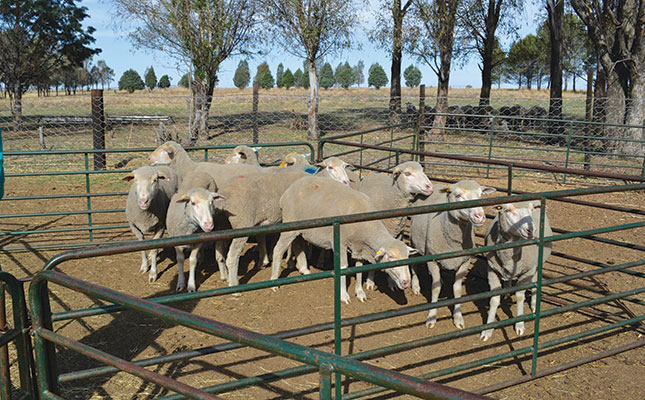
Long gone are the days when sheep were produced on sleepy farms where the animals were simply left on the veld for days without having any contact with the farmer. These days, farmers have to manage their flocks with far greater care due to the risks posed by stock theft and predation.
Gareth Angus runs Merino sheep, cattle (Simmentaler and Simbra) and game with his father on Wisp-Will Farm near Arlington in the eastern Free State. He is in charge of the sheep component.
Spring and Autumn lambing “We divide the sheep into two flocks: a spring- and an autumn-lambing flock,” Angus says. The spring group lambs from the beginning of September until mid-October, while the autumn group lambs from mid-May until the end of June. Both do so in staggered subgroups.
“Each group of ewes lambs once a year. As a result, we have two lambing seasons per annum.”
All maiden ewes (two-tooth) are put to the ram at 18 months old. Teaser rams are used initially for 11 days at three or four rams per 100 ewes, followed by breeding rams for 34 days at the same ratio.
“I believe young ewes should first be opened naturally before receiving sponges or [controlled internal drug release], which releases progesterone to suppress ewes’ heat or oestrus, as their vaginal canal is still narrow at 18 months and the device used to administer a sponge for synchronisation sometimes hurts them,” says Angus.
After the ewes have lambed for the first time, they are synchronised.
“Every season, I synchronise two to three groups of ewes of about 240 to 260 ewes per group about 10 days apart, after which natural mating takes place.” Each ram covers between four and six ewes.
Angus has ingeniously converted an old bale shed, built years ago by his grandfather, Willy, into a lambing shed.
It houses 150 lambing pens of 2,5m2 each.
“This is a good-sized [pen] for Merino ewes,” he says. “Meat breeds need a larger pen.”
The shed is the ideal facility for the lambing pens, as the animals are sheltered from the elements by the roof and the dirt floor remains dry.
“I only let ewes carrying multiples lamb in these pens. Usually, between 45% and 60% of my ewes carry multiples. All the pens are therefore filled every 14 days.”
Each group of multiple-carrying ewes is put in the lambing pens as soon as the first ewe has lambed.
“The ewes and their lambs are let out of the pens when the lambs reach the right size and vigour. They aren’t let out on a certain date,” says Angus, adding that it usually takes between a week and 10 days before all the animals in a group are let out.
Once all the animals have left the pens, the entire shed is disinfected and thoroughly cleaned before the next group is housed.
After being moved out of the lambing pens, the ewes and their lambs are placed in 5m x 10m camps for three days. Each camp holds 10 ewes and their lambs.
“It’s easier for a ewe to learn to identify her lambs in smaller camps,” Angus explains.
“After three days, the ewes and lambs are transferred to larger camps.”
The spring group grazes mainly on planted pasture, which is a mixture of Smuts finger grass (Digitaria eriantha), lucerne (Medicago sativa) and poor man’s lucerne (Sericea lespedeza).
The autumn group grazes on harvested maize and sunflower lands, or radishes and oats that have been planted specifically for the ewes and lambs. The group continually grows in number, and about two weeks after the last multiple-carrying ewe group has lambed, the three multiple-carrying ewe groups are combined into one flock.
Ewes that give birth to singletons give birth outside in lambing camps between trees. These are between 0,5ha and 1ha in size.
Ewes that lamb naturally (unsynchronised) do so in 100m x 50m jackal-fenced camps. The sheep remain here for at least two weeks before being moved to larger camps or fields.
Own pellet machine Another way in which Angus has improved the efficiency of his intensive operation is by procuring a Jones pellet- manufacturing machine.
“We manufacture three types of pellets,” he says. “Ewe pellets are given three weeks before lambing and up to a month after lambing. One month post-lambing up to the weaning of lambs, the ewes receive another pellet. The third type of pellet that we manufacture is lamb creep feed pellets.”
The pellets are all manufactured from the Anguses’ own feed and maize, along with high-protein concentrate (HPC) and molasses that are bought in. Angus bought the machine second-hand for R170 000.
“Previously, we spent between R60 000 and R80 000 per [lambing] season just on the lamb creep pellets at the local co-op,” he says. Because they have two lambing seasons on the farm, this added up to about R140 000 a year.
“Our annual costs, two seasons per annum, with own feed and bought-in HPC and molasses meal for the pellet machine, come to R70 000 per annum. This includes electricity.
“We therefore achieve a saving of R70 000 per annum, or R35 000 per lambing season. Over five lambing seasons, there’ll be a saving of up to R175 000 (over 2,5 years) and we’ll break even with the machine’s cost of R170 000.” There is a similar saving on the ewe pellets.
Three weeks prior to lambing, single- and multiple-carrying ewes are split up, and each group then receives its own pellet ration.
“One thing I’ve learnt is that Cryptosporidium and E. coli are always a danger when it comes to intensive sheep farming,” says Angus.
“It’s therefore very important that the lambing pens dry out between seasons. I also disinfect the pens twice with F10 and Kenocox between seasons and dose the lambs on day one, three and five with Elixir Gold and EM, and inject them with a sulfa drug such as Kyrotrim, Sulfatrim, Ecosulf LA or Maxisulf LA.”
All ewes are also inoculated against E. coli and Salmonella prior to lambing.
“Lambs with symptoms are injected with sulfa or Baytril-type antibiotics. They are also isolated as a group with their dams.”
Technology boosts profits This year, Angus switched his identification system from ordinary colour tags to a radio frequency identification system (RFID), using the BenguFarm software system with a Tru-Test scale.
“It has simplified herd management and is far more accurate,” he says.
Each ewe receives an RFID tag that is scanned by the computer in the crush. “Each lamb also receives a tag, which is linked to the mother. All the information available on a ewe immediately comes up when the tag is scanned.”
The RFID system also makes it easier to manage fertility. A veterinarian scans all the ewes to determine if they are open, or if they are in lamb with singles or multiples.
“Open ewes don’t get a second chance to conceive; they are culled,” says Angus.
To ensure he tracks his herd as closely as possible, he has also written his own Excel program to record all information pertaining to pregnancies.
“We also have a hamel farming operation where some of our ram lambs are castrated and kept after weaning, and sheared every eight months. The hamels are placed in camps with poorer grazing and where it’s more difficult to manage lambs due to predators.”
These camps are generally also more secluded.
The hamels are kept until they are at the six-tooth (B-grade) or eight-tooth (young C-grade) stage. At this point, they are sheared again and sold at livestock auctions. The shearing seasons are in April, August and December, which fits in neatly with the lambing seasons.
“This ensures that we never have ewes that lamb during the shearing season.”
The shearing operation, he adds, can put undue stress on an in-lamb ewe, causing her to abort.
Email Gareth Angus at [email protected]
MORE FROM FARMER’S WEEKLY

Young sheep farmer builds thriving business despite challenges

White Savanna goats add meat to beef enterprise

The riskiest periods for sheep producers

Sheep production: Why healthy teeth mean healthy profits

Angora: good money from a great breed

Merino: why a bigger flock is better on the Mpumalanga Highveld

Extreme weather blamed on climate change and El Niño
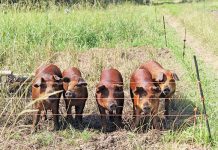
Western Cape farmer’s model for running pigs on pasture

Zimbabwe’s economic growth down to 2%

Mzansi Food & Drink Show: Celebrate culinary fusion in Joburg
Northern Cape sheep farmer’s lessons from the drought
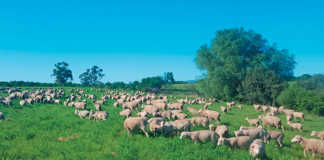
The finest Merinos in SA bred using genetic extremes
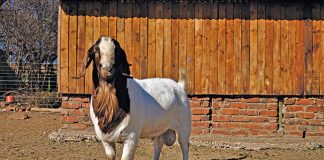
Starting a Boer goat stud on a 10ha farm

IMAGES
VIDEO
COMMENTS
A well-considered business plan is an essential part of operating any business, and sheep production is no different. Your sheep farm plan should include a clear set of goals, a firm grasp of flock management fundamentals, and the marketplace in which you plan to sell your breeding stock, meat, wool, and (if applicable) dairy products.
Step 2: Design a Financial Model. A well-designed financial model will help you understand your cash flow and profitability. You'll need to consider factors such as the cost of land, sheep, feed, equipment, and labor. Your financial model should include revenue projections, expenses, and profit margins.
Here is a year by year look at the marketing that went into building the Shepherdess Brand: Year 1: I set a solid foundation. Mindset and otherwise. I decided I wanted to make $100k per year farming 23 acres, with a minimum net profit of $30k. Decided I was going direct to consumer.
Implementing the intensive sheep farming system via excel spreadsheet. The Mamre Dormer Stud comprises 270 ewes and 205 rams that are run on only 40ha. Of the eight groups of ewes, four are in-lamb on the veld as a group at a time. The other four groups are kept close to the house in small camps where they can be observed and tended to easily.
A Sample Sheep Farming Business Plan Template. 1. Industry Overview. Sheep farmers primarily raise or fatten sheep and lambs for their wool, meat, milk or sale to other farmers. Meat derived from these animals is separated into two categories, which include lamb and mutton. Lamb is meat from sheep less than one year old, while mutton refers to ...
Startup budget for a sheep farm. Part of your business plan should cover the rough numbers involved in getting your business going. This is particular to each business, but a few large capital expenditures universal to sheep farmers are: The cost of your sheep (for a rough number, assume around $400 per sheep) The cost of your sheep barn or ...
Step 1: Business Plan. Regardless of the size of your sheep farm, you must craft a business plan. Your sheep farming business plan must consist of a financial analysis, marketing strategy, and income revenue calculations. Here is a breakdown of the key components to include in your sheep business plan:
The projected P&L statement. The projected P&L statement for a sheep farm shows how much revenue and profit your business is expected to make in the future. A healthy sheep farm's P&L statement should show: Sales growing at (minimum) or above (better) inflation. Stable (minimum) or expanding (better) profit margins.
Here are some important steps to develop a comprehensive financial plan and budget: 1. Calculate start-up costs: Determine the initial investment required to set up your sheep farm. Consider expenses such as purchasing land, acquiring sheep, building shelters, purchasing equipment, obtaining permits, and hiring staff.
How to Start Sheep Farming in 10 Steps, Business Plan, Management, and Care, Develop a Business Plan, Obtain Necessary Permits and Licenses and More
Sheep farming is a lucrative business with huge potential for growth as the demand for wool, meat, and hides continues to soar. According to recent statistics, the global wool production industry alone is projected to reach $44.8 billion by 2025.. Starting a sheep farming business involves a lot of planning and preparation.
Extensive sheep farming is under pressure from several factors. An increasing intensification of the industry, as a result of this change there is a growing need for knowledge in intensive sheep farming. The purpose of this handbook is not to put comprehensive plan in place; however, it is to serve as a practical basis where further
A well-crafted sheep farming business plan is crucial for success in this industry. It outlines your goals, strategies, and financial projections, helping you navigate challenges and exploit opportunities. This metadescription highlights the importance of having a comprehensive business plan for starting or expanding a sheep farming venture.A successful sheep farming business requires careful ...
Sheep Farm Business and Management. If you want your sheep raising operation to be a successful one, there are several factors to bear in mind. These include safe operation and facilities, nutrition and manure management plans, and risk management. Flock records can be used to set goals and make selection decisions.
The financial plan section of your sheep farming business plan should provide detailed projections for your business's financial performance. This section should include a cash flow statement, a profit and loss statement, and a balance sheet. ... Intensive sheep farming is a more modern method of raising sheep, and it involves keeping sheep ...
Sheep farming is a very profitable business to start in South Africa. The two primary products for sheep farming are sheep meat (lamb & mutton) and wool. The demand for lamb and mutton in South Africa is high, exceeding 200 000 tonnes per year. There is a large export market for South African sheep wool, as over 55 million KG of wool is ...
Select & Purchase Breeds. There are numerous sheep breeds available throughout the world to choose from. Some common and popular breeds for commercial sheep farming business are Cheviot, Suffolk, Polypay, Jacob, Hampshire, Katahdin, Merino, Ramboullet, Bannur, South Down etc. Choose the breed depending on your production purpose.
An intensive sheep production system involves confining flocks with only limited grazing, aiming to achieve heavier lambs at slaughter, shorter lambing intervals, and higher weaning percentage than those found in flocks maintained under extensive grazing conditions. ... Step 1 - Create a proper sheep farming business plan - Firstly, you ...
Space requirements vary depending on the breed and size of the ewes. A good rule of thumb is 10 to 12 square feet of shelter space per ewe, 12 to 16 square feet per ewe and lamb pair, and 6 to 8 square feet per feeder lamb. Adequate fencing is needed to keep the various groups of sheep in their specific pastures.
Apply at least one acre of fodder per sheep. Create a Zero grazing unit with cubicles, a walking area, feed and water troughs, a roof, and a milking area. Choose the right sheep with the resources available on the farm that is profitable in such situations. In this case, a Friesian is suitable.
The first rule of precision sheep farming is the sustainable management of veld in good condition and maintaining a livestock load that is in harmony with the farm's carrying capacity. The second rule advocates a breeding flock that conceives regularly and without difficulty under their specific environmental conditions, that successfully ...
17 April 2022 | 10:00 am. Intensive sheep farming has given eastern Free State farmer Gareth Angus the opportunity to increase his lambs' survival rate, boost profits and ensure traceability from birth to farm gate, while also decreasing predation and elemental risk. Susan Marais visited Angus's farm during the 2021 LRF Stockman School.
Extensive sheep farming is under pressure from several factors. An increasing intensification of the industry, as a result of this change there is a growing need for knowledge in intensive sheep farming. The purpose of this handbook is not to put comprehensive plan in place; however, it is to serve as a practical basis where further discussion, planning, research and development can take place.